Posts Tagged humanticide
What’s Involved in Stopping War and Ecocide and the Necessary Mess of Transformation: Hard to Believe, But We’re Getting Saner
Posted by sillymickel in activism, authenticity, being yourself, Class, Culture, economics, Generations, globalrevolution, History, individualism, life, meaning, nonconform, occupywallstreet, philosophy, Politics, psychology, spirituality on July 2, 2013
The Cycle of All Events, the Evolution of Parenting, and Auspicious Collective Regressions: Being Crazy in an Insane World Might Mean You’re the Sane One
Chapter Nine: Regressions in the Service of Society — Messy Healing
There Is a Cycle to All Events … The Spiral Dance, Why We Can’t Get No Satisfaction, and Where There Is Real Hope
The Spiral Dance – The Cycle of All Events: Wedded to Rebirthing Rituals, the Inevitability of Disappointment, and Where There is Real Hope
Wedded to Rebirthing Rituals

 At the point when the perinatal unconscious arises, individuals — and collectively, society — have the choice to turn toward the emergence of these feelings or to turn away from them.
At the point when the perinatal unconscious arises, individuals — and collectively, society — have the choice to turn toward the emergence of these feelings or to turn away from them.
In turning toward these feelings we embrace, feel, and if we go deeply enough into that, we relive the roots of them and resolve them finally.
 In turning away from them we shun them, act them out, and are enslaved by them…thus we act unconsciously, trance-like, zombie-like.
In turning away from them we shun them, act them out, and are enslaved by them…thus we act unconsciously, trance-like, zombie-like.
If we face these inner forces—we call that feeling them…in this instance, feeling through or reliving one’s birth—we integrate them and heal the underlying trauma, the perinatal trauma.

 Or the individual and society can avoid this going within—as depicted in the peace symbol—and can choose instead to act them out, which is the peace symbol upside down—the Satan symbol, the pentagram.
Or the individual and society can avoid this going within—as depicted in the peace symbol—and can choose instead to act them out, which is the peace symbol upside down—the Satan symbol, the pentagram.
 In acting them out, one distracts oneself from the uncomfortable feelings, which though not focused on, are still there.
In acting them out, one distracts oneself from the uncomfortable feelings, which though not focused on, are still there.  One tries to be “strong” in the face of feelings but one is actually driven and directed by them—they “take over one’s mind.”
One tries to be “strong” in the face of feelings but one is actually driven and directed by them—they “take over one’s mind.”  This is the source of the idea of spirit possession and in general of the idea that a devil or Satan can take over one’s soul.
This is the source of the idea of spirit possession and in general of the idea that a devil or Satan can take over one’s soul.
So in running from our feelings we are captured and enslaved by them, we are forced to act them out in ways we would not otherwise choose which are negative to horrible but in all cases self-sabotaging. Of course war is the most horrible, most self-sabotaging, greatest, and most all-consuming form of such acting-out…the greatest struggle.
Humans are characterized by a particular kind of birth process. It is a coming into being that is traumatic and which is related to our distinction of standing upright and thereby decreasing the pelvic opening as well as suffocating the fetus prior to birth. The fact is that because of this “distinction” we are destined to go through periods of rebirthing purificatory rituals, whether for good or ill. [Footnote 1]
It is a coming into being that is traumatic and which is related to our distinction of standing upright and thereby decreasing the pelvic opening as well as suffocating the fetus prior to birth. The fact is that because of this “distinction” we are destined to go through periods of rebirthing purificatory rituals, whether for good or ill. [Footnote 1]
For we are psychologically wedded to reliving that which we could not fully experience at the time because of the overwhelming quality of pain associated with it.
A “Spiral Dance”
These rebirthing rituals we are doomed to repeat, one way or the other. We are going to act out this primal pain—this birth trauma—in an unending cycle of feelings having these components
- Periods of feelings of expansion
- Closedness or entrapment, guilt, and depression
- Aggression
- Release
In winning the “war” or having the success or achievement, there begins the same cycle of expansion followed by entrapment. Losing the war…the struggle, the battle…is akin to death, even if there is no death. There is numbness and repression…akin to a kind of “limbo”…before life can begin anew. A reconception is necessary.
The Pattern of Our First Nine Months Imprints Us For Our Entire Human Lives
 The reemergence of hope in individuals and societies is biologically equivalent to conception. And following this reconceiving, there is a similar cycle of reemerging strength—akin to the expansion that follows winning.
The reemergence of hope in individuals and societies is biologically equivalent to conception. And following this reconceiving, there is a similar cycle of reemerging strength—akin to the expansion that follows winning.  Then there is continuing depression or overarching gloom and helplessness feelings coupled with revenge feelings and blame as individuals and societies stew in the vessel of indecision, inaction, and doubt. This is quite like the closedness and guilt which follows achievement-success-victory. Note, however, that the revenge and blame feelings here are aspects of the BPM II matrix, just as is closedness and guilt.
Then there is continuing depression or overarching gloom and helplessness feelings coupled with revenge feelings and blame as individuals and societies stew in the vessel of indecision, inaction, and doubt. This is quite like the closedness and guilt which follows achievement-success-victory. Note, however, that the revenge and blame feelings here are aspects of the BPM II matrix, just as is closedness and guilt.
Can’t Get No Satisfaction
 And then the cycle is the same again. Specifically, there is aggression against the oppressor (War and revolution both see the foe as an oppressor, even if one is actually the one who is the aggressor.) What follows upon fighting is release or “death”; and so on around. The “happily ever after” that inspires such battle truly only exists in fantasies and fairy tales. Prosperity and feelings of success are unfortunately doomed, on this physical plane of existence, to be short-lived.
And then the cycle is the same again. Specifically, there is aggression against the oppressor (War and revolution both see the foe as an oppressor, even if one is actually the one who is the aggressor.) What follows upon fighting is release or “death”; and so on around. The “happily ever after” that inspires such battle truly only exists in fantasies and fairy tales. Prosperity and feelings of success are unfortunately doomed, on this physical plane of existence, to be short-lived.
Where There Is Real Hope

 It would seem we are fated to never be happy, for long. But progress is possible;
It would seem we are fated to never be happy, for long. But progress is possible;  herein lies our only real choice in the entire scenario. For we either work through these cycles in some deep psychologically
herein lies our only real choice in the entire scenario. For we either work through these cycles in some deep psychologically  transformative way that helps us deal with and pass beyond the difficult and painful parts of the cycle as well as helps to fade the imprints’ potency in determining our behavior
transformative way that helps us deal with and pass beyond the difficult and painful parts of the cycle as well as helps to fade the imprints’ potency in determining our behavior  or we are doomed to act them out in the external world in ways that we are blindly unaware are not congruent with the actual facts of our circumstances and are harmful to ourselves and others around us.
or we are doomed to act them out in the external world in ways that we are blindly unaware are not congruent with the actual facts of our circumstances and are harmful to ourselves and others around us.
 We are fated to experience these cycles of birth, and we will either act them out disastrously or we find ways
We are fated to experience these cycles of birth, and we will either act them out disastrously or we find ways  of dealing with them inside of ourselves in some way—and some ways are better than others for doing this—so that we can have some inner distance from these patterns and therefore some conscious ability or choice around our actions when these pushes and pulls arise.
of dealing with them inside of ourselves in some way—and some ways are better than others for doing this—so that we can have some inner distance from these patterns and therefore some conscious ability or choice around our actions when these pushes and pulls arise.
Railing Against the Darkness: The Vanity of Will, The Impotence of Reason, Progress Requires Regress, and Healing Is Nothing if Not Messy
Railing Against the Darkness, The Vanity of Will, The Impotence of Reason, and Social Progress Requires Regression
The Vanity of Will, The Impotence of “Reason”
 What we absolutely don’t have, yet arrogantly think we do, is the ability—through will or reason alone—to choose light over darkness, to replace these inner veils of distortion with clarity of thought and perception and hence of positive behavior and actions while in the midst of them.
What we absolutely don’t have, yet arrogantly think we do, is the ability—through will or reason alone—to choose light over darkness, to replace these inner veils of distortion with clarity of thought and perception and hence of positive behavior and actions while in the midst of them. Trying to reason with and to obtain truly desired outcomes is about as possible as trying to reason with a lizard and convince it to conform to one’s wishes for its behavior. For good reason: Indeed our rational mind is as split off from the “reptilian brain” inside us within which these imprints circulate and from which they arise as are we from the consciousness of a gila monster.
Trying to reason with and to obtain truly desired outcomes is about as possible as trying to reason with a lizard and convince it to conform to one’s wishes for its behavior. For good reason: Indeed our rational mind is as split off from the “reptilian brain” inside us within which these imprints circulate and from which they arise as are we from the consciousness of a gila monster.
What We Call “Reason” Is Largely Just Rationalization
This impotence of intellectual understanding in the face of these patterns of self-destruction occurs because  these schemas are rooted in memories existing in an emotional and entirely dissociated part of the brain, which is hardly touched by neocortical admonishing of any kind. As deMause correctly points out,
these schemas are rooted in memories existing in an emotional and entirely dissociated part of the brain, which is hardly touched by neocortical admonishing of any kind. As deMause correctly points out,
[The fetus’s] “early experiences have been found to be recorded in a separate early neural network—a dissociated emotional memory system centering in the amygdala, quite distinct from the declarative memory system centering in the hippocampus that is established in later childhood.” [Footnote 2]
 Disclaiming these cycles, which inevitably pass through darkness, and reliance on “will-power” to change one’s patterns, which includes self-sabotage, has been exposed in its impotence in modern times. We see as evidence the growing acknowledgment of the ineffectiveness and, indeed, counter-effectiveness of psychoanalysis. [Footnote 3]
Disclaiming these cycles, which inevitably pass through darkness, and reliance on “will-power” to change one’s patterns, which includes self-sabotage, has been exposed in its impotence in modern times. We see as evidence the growing acknowledgment of the ineffectiveness and, indeed, counter-effectiveness of psychoanalysis. [Footnote 3]
Railing Against the Darkness
So the question begging to be asked is “What do we do about it?” What do we do about these pernicious cycles?

 And when these elements erupt in society in harmless, possibly healing ways, how do we view them? Do we, as Mayr and Boelderl do in their article, “The Pacifier Craze: Collective Regression in Europe,” decry the regression…as if by disclaiming it we could somehow keep the cycle from happening? [Footnote 4]
And when these elements erupt in society in harmless, possibly healing ways, how do we view them? Do we, as Mayr and Boelderl do in their article, “The Pacifier Craze: Collective Regression in Europe,” decry the regression…as if by disclaiming it we could somehow keep the cycle from happening? [Footnote 4]
Mayr and Boelderl write, for example, that the situation of collective regression in Europe “strikes us as being high-explosive [sic] and bitter enough.” [Footnote 5]
In another place they exclaim, “What is horrible about this insight [about the increasing collective regression in Europe] is the additional observation that regression is becoming still more radical.” [Footnote 6]
This response of railing against the “Darkness” is a Freudian response. Yet it is not even a neo-Freudian one, since regression in the service of the ego—which began to be seen as ever more important by neo-Freudians—is not acknowledged, let alone considered.
Social Progress Requires Regression

 That regression in the service of the ego is not considered is confirmed by Mayr and Boelderl in their statement that “[R]egression by definition is a process of repression and a defense mechanism.” [Footnote 7]
That regression in the service of the ego is not considered is confirmed by Mayr and Boelderl in their statement that “[R]egression by definition is a process of repression and a defense mechanism.” [Footnote 7]
These are surprising words, in light of the concept of regression in the service of the ego and awareness of the clinically based evolution of psychotherapeutic theory since Freud’s original postulations, over a half-century ago.

 They are even more awry if one considers the universal, cross-cultural, implementation by societies of rebirthing rituals to handle the same kinds of forces we are confronted with.
They are even more awry if one considers the universal, cross-cultural, implementation by societies of rebirthing rituals to handle the same kinds of forces we are confronted with.  The anthropological literature is rife with these accounts.
The anthropological literature is rife with these accounts.
Further, Grof has meticulously shown that regularly going into altered states of consciousness where one confronts this material is a prime function of cultures, and it occurs nearly universally although it is woefully lacking in Western culture for the most part.
Moreover, these words by Mayr and Boelderl indicate a conflict with or ignorance of the fact that deMause’s theory of evolution of historical change requires regression on the part of parents, while parenting their children, as the primary “engine” of sociopsychological progress.
For deMause writes,
“[T]he ultimate source of all historical change is psychogenesis, the lawful change in childrearing modes occurring through generational pressure…. Psychogenesis depends upon the ability of parents and surrogates to regress to the psychic age of their children and work through the anxieties of that age better the second time than in their own childhood.” (op. cit., 1982, p. 135, emphasis mine.)

 But this mistake by these two social scientists would not be all that important if it was not the perfect example of the kind of uninformed attitude we have, generally speaking, in Western societies about these forces. This attitude is reinforced by a Judeo-Christian tradition of specialness and scapegoating in the West. It is a pervasive feeling about these things; specifically it, itself, is the actual defense. While this is a widespread reaction to our inner realities it is far from science, and even further from the truth or reality about these things.
But this mistake by these two social scientists would not be all that important if it was not the perfect example of the kind of uninformed attitude we have, generally speaking, in Western societies about these forces. This attitude is reinforced by a Judeo-Christian tradition of specialness and scapegoating in the West. It is a pervasive feeling about these things; specifically it, itself, is the actual defense. While this is a widespread reaction to our inner realities it is far from science, and even further from the truth or reality about these things.
“Stop It!” … Yeah, That’s Gonna Work
At any rate, if we adopt this Western, Judeo-Christian, Freudian tactic of decrying the darkness, we are as effective in derailing the cycle of violence and war as Freudians are in what amounts to admonishing their clients to “stop it!” when it comes to their neurotic self-sabotaging.

 For people cannot will themselves to merely stop their cycles of neurotic self-sabotage and self-destruction, which are the individual manifestations/ acting out of their birth traumas. As mentioned these directors of action operate out of a different part of the psyche, and brain, than one’s conscious willing part. They are simply not accessible, so hardly amenable, to rational or willful input. And changing one’s thoughts to affect them is about as helpful as rearranging the furniture on the deck of the Titanic.
For people cannot will themselves to merely stop their cycles of neurotic self-sabotage and self-destruction, which are the individual manifestations/ acting out of their birth traumas. As mentioned these directors of action operate out of a different part of the psyche, and brain, than one’s conscious willing part. They are simply not accessible, so hardly amenable, to rational or willful input. And changing one’s thoughts to affect them is about as helpful as rearranging the furniture on the deck of the Titanic.
Being Crazy in an Insane World Might Mean You’re the Sane One: Auspicious Collective Regressions
People Who Have It All Figured Out Are the Ones to Watch Out For … Emotional “Sickness” Might Indicate More “Wellness”
Regression in the Service of the Ego
With the exposure of the ineffectiveness of the Freudian tactic of intellectual understanding has come the Freudian movement’s disintegration into schools advocating various other strategies for change.

 These schools/strategies include the psychiatric—the use of drugs; the neo-Freudians who acknowledge and use regression in the service of the ego
These schools/strategies include the psychiatric—the use of drugs; the neo-Freudians who acknowledge and use regression in the service of the ego  and abreaction; the humanistic-existential approaches, stressing the “experiential”; and the Jungians and neo-Jungians, who would seek the resolution of these cycles in their inner archetypal acting out, resulting in an eventual rootedness of the ego in a higher Self (a spiritual center) beyond or transcending the cycles. [Footnote 8]
and abreaction; the humanistic-existential approaches, stressing the “experiential”; and the Jungians and neo-Jungians, who would seek the resolution of these cycles in their inner archetypal acting out, resulting in an eventual rootedness of the ego in a higher Self (a spiritual center) beyond or transcending the cycles. [Footnote 8]

 Other approaches include the bulk of the spiritual, new-age, or transpersonal means that are flourishing these days. These alternative paths basically differ from all others in their belief that one can simply
Other approaches include the bulk of the spiritual, new-age, or transpersonal means that are flourishing these days. These alternative paths basically differ from all others in their belief that one can simply  bypass these perinatal pulls and pushes and go directly to the Light or the Self by dismissing the birth cycles, or the Darkness or Shadow, through affirming the Light, meditating the Darkness out or the Light in, changing one’s thoughts, creating one’s reality, and various combinations of these.
bypass these perinatal pulls and pushes and go directly to the Light or the Self by dismissing the birth cycles, or the Darkness or Shadow, through affirming the Light, meditating the Darkness out or the Light in, changing one’s thoughts, creating one’s reality, and various combinations of these.
.

 Finally, these newer schools and strategies for healing include those of what might be called experiential psychotherapy, which includes primal therapy, holotropic breathwork, some forms of (experiential) meditation (Vipassana meditation, for example), Reichian and
Finally, these newer schools and strategies for healing include those of what might be called experiential psychotherapy, which includes primal therapy, holotropic breathwork, some forms of (experiential) meditation (Vipassana meditation, for example), Reichian and 
 bioenergetic approaches, some forms of hypnotherapy—experiential ones—ones that involve reliving traumas—and virtually all the techniques, treatments, and correctives that are espoused in the field of pre- and perinatal psychology.
bioenergetic approaches, some forms of hypnotherapy—experiential ones—ones that involve reliving traumas—and virtually all the techniques, treatments, and correctives that are espoused in the field of pre- and perinatal psychology.
 The point is that from a good number of these other-than-Freudian perspectives—and all of those that acknowledge the importance of
The point is that from a good number of these other-than-Freudian perspectives—and all of those that acknowledge the importance of  regression in the service of the ego—and from the perspective of the entire field of experiential psychotherapy, the answer to the cycles of violence, war, and death-rebirth is to stop the acting out, not
regression in the service of the ego—and from the perspective of the entire field of experiential psychotherapy, the answer to the cycles of violence, war, and death-rebirth is to stop the acting out, not ![]()
![]() by simply intellectually decrying it—as if one can actually talk oneself
by simply intellectually decrying it—as if one can actually talk oneself  out of one’s inner fears and one’s Darkness/Shadow—but by reliving those cycles of violence at their origins…their primal roots. In the case of perinatal forces, those forces from “the dark side,” this is accomplished by reliving the violence of birth, a perinatal trauma that is thoroughly and masterfully delineated by Grof and deMause. [Footnote 9]
out of one’s inner fears and one’s Darkness/Shadow—but by reliving those cycles of violence at their origins…their primal roots. In the case of perinatal forces, those forces from “the dark side,” this is accomplished by reliving the violence of birth, a perinatal trauma that is thoroughly and masterfully delineated by Grof and deMause. [Footnote 9]
Auspicious Collective Regressions
But from this perspective of experiential psychotherapy—one completely  congruent with and grateful of deMause’s contributions in psychohistory as well—regression, in Europe, or elsewhere, is not seen as something to decry, disclaim, be horrified of, or be seen as dangerous but is seen as an opportunity. Regression is certainly not seen as a form of defense but as the opposite of that. Regression is part of a process of diminishing one’s defenses against one’s internal reality of pain and trauma.
congruent with and grateful of deMause’s contributions in psychohistory as well—regression, in Europe, or elsewhere, is not seen as something to decry, disclaim, be horrified of, or be seen as dangerous but is seen as an opportunity. Regression is certainly not seen as a form of defense but as the opposite of that. Regression is part of a process of diminishing one’s defenses against one’s internal reality of pain and trauma.
Thus, examples of blatant collective regression as in Europe—more so to the ![]()
 extent they are relived, released, and integrated—are entirely auspicious for the eventual elimination of war as a collective device of acting out—defending against—the painful feelings coming from one’s personal history which one carries around, all unknowingly, and which pervade, in one way or another, in forms subtle and not so subtle, every moment of one’s consciousness in the present.
extent they are relived, released, and integrated—are entirely auspicious for the eventual elimination of war as a collective device of acting out—defending against—the painful feelings coming from one’s personal history which one carries around, all unknowingly, and which pervade, in one way or another, in forms subtle and not so subtle, every moment of one’s consciousness in the present.
From this experiential psychotherapeutic perspective, we have a different feeling about developments like those that Mayr and Boelderl describe as collective regression in Europe and Lawson describes as occurring at rock concerts. [Footnote 10]
From a more enlightened viewpoint these cultural phenomena should have us, if not dancing in the streets, at least hopeful of a gradual decrease in the use of war and violence.  Why? It is because the youth who display this “regression” so blatantly were brought up by an “advanced” form of child-rearing than that of previous generations, that they have fewer defenses, fewer layers of obfuscation covering up their unconscious psychodynamics; consequently the regression is seen more clearly in their behavior. [Footnote 11]
Why? It is because the youth who display this “regression” so blatantly were brought up by an “advanced” form of child-rearing than that of previous generations, that they have fewer defenses, fewer layers of obfuscation covering up their unconscious psychodynamics; consequently the regression is seen more clearly in their behavior. [Footnote 11]
Unflinching Belief Related to Total Dissociation
Why is this important? DeMause points out that people do go to war, and that  prior to it their perinatal dynamics come to the fore, as evidenced by perinatal-laden words and images in the media and in leaders’ speeches used to describe the situation and its dynamics. Thus, our leaders take us into war, they act out their perinatal dynamics…and we in following them act out ours…in such gruesomely overt ways because these dynamics are so hidden, repressed, and overlaid with defenses that the conscious mind has absolutely no access to, and hence insight into, them as being part of one’s unconscious dynamics.
prior to it their perinatal dynamics come to the fore, as evidenced by perinatal-laden words and images in the media and in leaders’ speeches used to describe the situation and its dynamics. Thus, our leaders take us into war, they act out their perinatal dynamics…and we in following them act out ours…in such gruesomely overt ways because these dynamics are so hidden, repressed, and overlaid with defenses that the conscious mind has absolutely no access to, and hence insight into, them as being part of one’s unconscious dynamics.
 Consequently the conscious mind is completely able to convince itself that those dynamics are actual, real, and doubtless parts of the situation and therefore require an actual, real, and extreme response. The amount of resolve required to act out war can only be wrought of an unflinching belief in the rightness, the absolute correctness of one’s perspective of the situation and therefore of that extreme course of response. And that can only be brought about by a total dissociation from one’s perinatal traumas, and a complete and utter projection of it on the outside—the enemy, to be specific.
Consequently the conscious mind is completely able to convince itself that those dynamics are actual, real, and doubtless parts of the situation and therefore require an actual, real, and extreme response. The amount of resolve required to act out war can only be wrought of an unflinching belief in the rightness, the absolute correctness of one’s perspective of the situation and therefore of that extreme course of response. And that can only be brought about by a total dissociation from one’s perinatal traumas, and a complete and utter projection of it on the outside—the enemy, to be specific.
Blatant “Sickness” Related to Being Real
 The contrary is also true: When there does not exist that total and complete dissociation of the perinatal trauma—when it is, as in Europe and rock concerts currently, closer to the surface, less defended against, less repressed and, hence, more blatant—it is more accessible to consciousness and less likely to be acted out in the extreme as in war. Instead it is more likely to be acted out in less extreme forms, such as jumping into mosh pits, carrying pacifiers, listening to baby tunes about the, very real, difficulties of being a baby, and so on.
The contrary is also true: When there does not exist that total and complete dissociation of the perinatal trauma—when it is, as in Europe and rock concerts currently, closer to the surface, less defended against, less repressed and, hence, more blatant—it is more accessible to consciousness and less likely to be acted out in the extreme as in war. Instead it is more likely to be acted out in less extreme forms, such as jumping into mosh pits, carrying pacifiers, listening to baby tunes about the, very real, difficulties of being a baby, and so on.
Finally, it is more likely to be actually allowed to emerge in consciousness and be relived, and thereby “healed”…and gone beyond, to be replaced by something more benign and more socially constructive, and thus to be removed forever as a motivation to war or violence. This is the auspicious view of the developments described by Mayr and Boelderl. [Footnote 12]
Janov was the first to point out that a permanent resolution of underlying trauma initially entailed an aggravation of symptoms and symbolic acting out. That is to say, the underlying dynamics become more blatant and apparent in behavior. [Footnote 13]
Janov was also the first to note that the acting-out and overt neurotic was closer to being “real,” and therefore really sane, than his or her highly functioning and “normal,” but repressed, rigidly defended, and unfeeling neighbor. [Footnote 14]
.
.
.
.
.
.
The Most Evolved Parenting … Boomers and Millennials … and The Cyclical Nature of History: I Know It’s Hard to Believe But We’ve Been Getting Saner
Thanks to You We’re Getting Saner: The Most Evolved Parenting … Boomers and Millennials … and The Cyclical Nature of History
Evolution of Parenting – We’ve Been Getting Saner
Finally, the correctness of the view that being “crazy” in an insane world might be more sane has been borne out in recent history. DeMause describes an evolution of parenting from ancient times to the present which involved ever decreasing psychosis and violence and increasing caring and consciousness of the needs of children. He connects this decrease in violent child caring to ever decreasing violence and psychotic acting out in societies.
DeMause labels the most common modern parenting mode the socializing mode. Short of the quite recent helping mode—which only really rose to prominence in the last three decades—the socializing mode is the most advanced and most humane.
Lest there be any confusion, I wish to point out that my own theoretical  understanding differs from deMause’s in one important respect. While I agree with his evolution of child-rearing over the course of civilization and within recorded time, I believe he is wrong about prehistory and what primal peoples were like and the kind of child-caring they engaged in. He depicts prehistoric societies as psychotically oblivious of the needs of children, engaging in, first, infanticidal; then, second, abandoning; then, third, ambivalent modes of child-rearing. Whereas it seems to me the overwhelming evidence and increasing numbers of anthropologists point to a natural “organic” child-caring being employed in the the mists of the past quite a bit more “advanced” than even many modes employed today.
understanding differs from deMause’s in one important respect. While I agree with his evolution of child-rearing over the course of civilization and within recorded time, I believe he is wrong about prehistory and what primal peoples were like and the kind of child-caring they engaged in. He depicts prehistoric societies as psychotically oblivious of the needs of children, engaging in, first, infanticidal; then, second, abandoning; then, third, ambivalent modes of child-rearing. Whereas it seems to me the overwhelming evidence and increasing numbers of anthropologists point to a natural “organic” child-caring being employed in the the mists of the past quite a bit more “advanced” than even many modes employed today.
 I believe the change from the loving parenting we see in many primal peoples and in Nature among many of our planetmates to the infanticidal, abandoning, and ambivalent modes he has described for early historic cultures is a product of that ever increasing control of Nature that went into full gear with the agrarian revolution, some ten to twenty-five thousand years ago. So, I am saying that brutal parenting was a consequence of “civilization” and was at its worst at the beginnings of recorded time.
I believe the change from the loving parenting we see in many primal peoples and in Nature among many of our planetmates to the infanticidal, abandoning, and ambivalent modes he has described for early historic cultures is a product of that ever increasing control of Nature that went into full gear with the agrarian revolution, some ten to twenty-five thousand years ago. So, I am saying that brutal parenting was a consequence of “civilization” and was at its worst at the beginnings of recorded time.
But I agree we have been gradually evolving to better modes of child-caring over the history of civilization to the most sane and psychologically beneficial modes employed in recent decades, which, you might want to note, are very much like the modes of the earliest humans. I describe why and how we lost our connection with Nature and loving ways of parenting—how we left “Eden”—in my book and blog “The Great Reveal.”
The Cycles of Time
I believe my understanding shows once again how much of what modern folks thought of “development”—including it being linear and increasing from “darkness” to “light” with ourselves always at the top (conveniently)—is wrong and merely part of an anthropocentric bias and an ethnocentric heritage. For more and more, as we lay down those blinders to reality, we notice the evidence of the cyclical nature of everything—from our lives (ashes to ashes) to the physical Universe’s expansion and contraction, to the vibrations at the subatomic level, the waves in the sea, the turning of the Earth and the revolutions of the solar systems, and I contend now also, the so-called “history” of our species on Earth. This is the thoroughly postmodern idea that human time is also cyclical, with over and again peoples returning to earlier halcyon times only to “fall” away from them.
The Worst of Times Quality of Current Events
This idea of time as cyclical not linear is in keeping with Eastern philosophies, as well as indigenous ones. Hindu thinking currently has us at the depths of the Kali Yuga, the worst part of the cycle right now, with matters to be reversed very soon and the best of times just ahead. And, as I have been describing in my books Falls from Grace and Primal Renaissance and will be directly pointing out in my upcoming book, Primal Return, we are currently seeing a most necessary return to a more harmonious way of being and a more natural self. And with it, requiring it, to some extent preceding it, we are evolving to the most advanced mode of loving parenting.
The “Best of Times” Nature of Our Parenting
Psychohistorian Glenn Davis, following deMause, analyzed the most advanced form of child-caring short of the most recent helping mode—the psychogenic parenting mode deMause termed socializing—and found that it comprised four submodes. In order, beginning in the mid-nineteenth century to the mid-twentieth century and each one a more “evolved” and humane one than the previous one, they are the submodes of psychic control, aggressive training, vigorous guidance, and delegated release. [Footnote 15]
Oh, Be-HAVE. WWII Generation … Received Aggressive-Training and Vigorous-Guidance Parenting
Davis concluded that in America the Vietnam War was perpetrated by individuals belonging almost entirely to the aggressive-training and vigorous-guidance psychoclasses. [Footnote 16]
Questioning Authority and Oneself Is Good. Boomers … Received Delegated Release Parenting

 Yet the Vietnam War was brought to an end largely as a result of the efforts of an antiwar movement whose largest component was a Sixties youth brought up under a more advanced delegated-release child-caring mode. [Footnote 17]
Yet the Vietnam War was brought to an end largely as a result of the efforts of an antiwar movement whose largest component was a Sixties youth brought up under a more advanced delegated-release child-caring mode. [Footnote 17]
The delegated release mode, which resulted in the phenomenon of Sixties youth and the counterculture, is the most “advanced” mode short of the helping mode.
“Let’s Collaborate” – Millennials. Received the Most Advanced Parenting – Helping … “We Just Want You to Be Happy.”

 The helping mode is the child-caring mode employed widely by the Sixties generation for their children, the Millennial Generation, also known as Generation Y. So, a helping mode of parenting was enjoyed by the children of a delegated-release psychoclass, the Boomers. Sixties youth are seen, psychologically, to have the most the most “advanced” ego structures short of their children taught within a helping mode. [Footnote 18]
The helping mode is the child-caring mode employed widely by the Sixties generation for their children, the Millennial Generation, also known as Generation Y. So, a helping mode of parenting was enjoyed by the children of a delegated-release psychoclass, the Boomers. Sixties youth are seen, psychologically, to have the most the most “advanced” ego structures short of their children taught within a helping mode. [Footnote 18]
What’s Involved in Stopping War and Ecocide – Peace Is Painful: But Better Psychotic Than Warring
Ending War and Humanicide—Peace Is Worth its Price of Suffering: Better “Emotionally Disturbed” Than “Healthily” Fighting in War
Walking In Another’s Moccasins
It is obvious that these Sixties youth did not have the same unflinching and unqualified belief in the absolute rightness of their country’s position in Vietnam as did many of their parents. ![clip_image009[1] clip_image009[1]](https://apocalypseknow.files.wordpress.com/2012/07/clip_image00911.jpg?w=301&h=201) This is obviously the case in a psychoclass of youth chanting a generational mantra, “Question authority!” and whose more extreme members would at times even go over to the perspective of seeing the war from the eyes of the “enemy,” the Other.
This is obviously the case in a psychoclass of youth chanting a generational mantra, “Question authority!” and whose more extreme members would at times even go over to the perspective of seeing the war from the eyes of the “enemy,” the Other.
As I mentioned earlier, among the Sixties Generation we saw Jane Fonda’s journey to Hanoi, the waving of North Vietnamese flags by protesters, ![clip_image011[2] clip_image011[2]](https://apocalypseknow.files.wordpress.com/2012/07/clip_image0112.jpg?w=336&h=289) and the carrying of little red books on the sayings of Chairman Mao. These are obvious indicators that the generation as a whole was open to seeing the war from the North Vietnamese perspective: That is, as a conflict perpetrated by a foreign nation that was hypocritical in its espousal of democracy in that it prevented democratic elections that would have without doubt elected Ho Chi Minh and instead it installed a puppet-ruler in the South, making Vietnam a virtual colony of the United States. From this perspective, the
and the carrying of little red books on the sayings of Chairman Mao. These are obvious indicators that the generation as a whole was open to seeing the war from the North Vietnamese perspective: That is, as a conflict perpetrated by a foreign nation that was hypocritical in its espousal of democracy in that it prevented democratic elections that would have without doubt elected Ho Chi Minh and instead it installed a puppet-ruler in the South, making Vietnam a virtual colony of the United States. From this perspective, the ![clip_image013_thumb[3] clip_image013_thumb[3]](https://apocalypseknow.files.wordpress.com/2012/07/clip_image013_thumb3_thumb.jpg?w=237&h=339) Vietnam War was for the Vietnamese as much a war for independence as the American Revolution was for the U.S.
Vietnam War was for the Vietnamese as much a war for independence as the American Revolution was for the U.S.
This is just an example of how there are two sides to every issue and how an attempt at empathy or “walking in The Other’s moccasins”—made possible by a closeness to a perinatal unconscious that is also an opposite perspective than that of the conscious mind—can lead, at the minimum, to the reluctance necessary to prevent engaging in at least the most blatant and horrific forms of violence…against others, but consider also, against Nature.
The Perinatal Generation
 At any rate, is there evidence that this undermining of the self-righteous position necessary for the instigation and carrying out of war and ecocide—this ability to see at least somewhat from The Other’s perspective and not just one’s own—is in truth correlated with a closeness to perinatal dynamics, a closeness to the unconscious for that generation of youth, those of the Sixties? The answer: Absolutely yes!
At any rate, is there evidence that this undermining of the self-righteous position necessary for the instigation and carrying out of war and ecocide—this ability to see at least somewhat from The Other’s perspective and not just one’s own—is in truth correlated with a closeness to perinatal dynamics, a closeness to the unconscious for that generation of youth, those of the Sixties? The answer: Absolutely yes!
 As mentioned in a previous part, sociologist Kenneth Keniston did psychological studies of members of the Sixties Generation.
As mentioned in a previous part, sociologist Kenneth Keniston did psychological studies of members of the Sixties Generation.
He was inspired to do so through his noticing that he was seeing something really unusual and radically different in these youth than what he had ever seen. This led to his fascination with discovering what made them so different. And he documented his findings in two books—The Uncommitted: Alienated Youth in American Society and Young Radicals: Notes on Committed Youth. Roughly speaking he chose to study the unconscious dynamics of both the “alienated-hippie” and the “activist” sectors, respectively, of that generation. [Footnote 19]
Blushing Troll-Handlers

 At the risk of repeating myself, I wish to remind the reader that a reading of his books—keeping in mind that Keniston knew nothing of perinatal dynamics at that time, and few people did, for that matter—reveals a degree of perinatal imagery, fantasy, and acting out—especially among “the uncommitted”—enough to make a troll-handling, pacifier-wearing, mosh-pit jumping youth of today to blush! [Footnote 20]
At the risk of repeating myself, I wish to remind the reader that a reading of his books—keeping in mind that Keniston knew nothing of perinatal dynamics at that time, and few people did, for that matter—reveals a degree of perinatal imagery, fantasy, and acting out—especially among “the uncommitted”—enough to make a troll-handling, pacifier-wearing, mosh-pit jumping youth of today to blush! [Footnote 20]
Self-Analysis and Psychological-Mindedness

 Because of this peculiar perinatal access, I don’t believe it is any coincidence that Keniston also found an unusual amount of inner reflection—questioning oneself—alongside the more well known questioning authority. This he labeled “overexamined life” for the alienated sector and “psychological mindedness” for the activists.
Because of this peculiar perinatal access, I don’t believe it is any coincidence that Keniston also found an unusual amount of inner reflection—questioning oneself—alongside the more well known questioning authority. This he labeled “overexamined life” for the alienated sector and “psychological mindedness” for the activists.
Better Emotionally Disturbed Than “Healthily” Engaging in War
So, being close to one’s perinatal imprints, being less defended against one’s inner unconscious painful memories, leads to one being able to question not just oneself—and therefore to be a catalyst to personal growth and a quest for truth—but also the actions of one’s society. It is a counterbalance to our tendency to act out in violence to others as in war and to Nature as in ecocide. It means people will suffer more inner turmoil and pain, will feel more psychologically “disturbed,” and will be less likely to take it out on others, will be less likely to make others or the environment “pay” for what happened to them.
Let us contrast that with its opposite. DeMause writes,
Hitler’s projection of his fears…into Jews and foreigners helped him avoid a psychotic breakdown and enabled him to function during his later life, as long as others shared his delusion of poisonous enemies.
Therefore acting out collectively, as in war, can prevent a psychotic breakdown in certain individuals.
Better Psychotic Than Waging War
 But when the consequences of acting out one’s birth trauma, collectively, is millions of people—including oneself—dead, not to mention the uncountably large loss of material and personal resources, it is clear that by comparison a psychotic breakdown is a more benign alternative for either the individual or the society in which that or those individuals act.
But when the consequences of acting out one’s birth trauma, collectively, is millions of people—including oneself—dead, not to mention the uncountably large loss of material and personal resources, it is clear that by comparison a psychotic breakdown is a more benign alternative for either the individual or the society in which that or those individuals act.
 Similarly, not providing the outlet of war as a collective birth ritual…oftentimes, for the soldier involved, euphemistically called a “rite of passage”…would allow the genuine neurotic breakdowns, the collapse of people’s defenses, and their opening up to their underlying perinatal dynamics. Thus accessed, they can be healed, or in the least they would prevent the kind of unflinching belief or self-righteousness required for war and violence.
Similarly, not providing the outlet of war as a collective birth ritual…oftentimes, for the soldier involved, euphemistically called a “rite of passage”…would allow the genuine neurotic breakdowns, the collapse of people’s defenses, and their opening up to their underlying perinatal dynamics. Thus accessed, they can be healed, or in the least they would prevent the kind of unflinching belief or self-righteousness required for war and violence.
Some folks might even be motivationally paralyzed—receiving information from the unconscious that contradicts and undermines the stance and beliefs of their conscious ego. But when that egoistic stance is slanted, commonly, towards war, violence, selfishness and greed and corresponding environmental apathy, then better one would be indecisive, overwhelmed, and doing nothing.
The Price of Emotional Pain Is Minuscule Compared to That of War
Yet it is true that this neurotic breakdown, of at least a small amount, on the scale of society would result in the kind of collective regressions that Mayr and Boelderl, and Lawson describe. That is, the cause of peace, of the saving of human lives, requires that people pay the price of encountering their primal pain.
![clip_image019[1] clip_image019[1]](https://apocalypseknow.files.wordpress.com/2012/07/clip_image0191.jpg?w=375&h=248) By all measures, this peace price is minuscule. It is even more worth it when you take into account the fact that many people, after initially “breaking down” for lack of a collective…and highly destructive…act-out like war/aggression, will actually succeed in reconstructing a self more in line with reality, through the dynamics and means categorized under the term regression in the service of the ego, desccribed above. Regardless of professional help…which would be nice but is not always available or practical…some people just find a way.
By all measures, this peace price is minuscule. It is even more worth it when you take into account the fact that many people, after initially “breaking down” for lack of a collective…and highly destructive…act-out like war/aggression, will actually succeed in reconstructing a self more in line with reality, through the dynamics and means categorized under the term regression in the service of the ego, desccribed above. Regardless of professional help…which would be nice but is not always available or practical…some people just find a way.
Continue with Chapter Ten: Where There Is Hope, Cultural Rebirthing
Return to Apocalypse No! Chapter Eight:
Derailing the Cycles of War and Violence
Footnotes
1. A. Briend, “Fetal Malnutrition: The Price of Upright Posture?” British Medical Journal 2 (1979): 317-319.
2. DeMause, op. cit., 1995, p. 12, emphasis in original.
3. See, for example, Alice Miller, For Your Own Good: Hidden Cruelty in Child-Rearing and the Roots of Violence, trans. by Hildegarde and Hunter Hannum. New York: Farrar, Straus and Giroux, especially “Vantage Point 1990,” pp. vii-ix.
4. Daniela F. Mayr & Artur R. Boelderl, “The Pacifier Craze: Collective Regression in Europe.” The Journal of Psychohistory 21 (1993): 143-156.
5. Ibid., p. 144.
6. Ibid., p. 148, emphasis mine.
7. Ibid., pp. 149-150.
8. Regarding the “experiential,” I should make clear that this approach is, from the perspective of the experiential psychotherapeutic approach I will be describing shortly, actually the superficial symbolic acting out of these underlying and powerful cycles in a way that is only a little less impotent than the Freudians.
9. DeMause, op. cit., 1995.
10. Alvin H. Lawson, “Placental Guitars, Umbilical Mikes, and the Maternal Rock-Beat: Birth Fantasies and Rock Music Videos.” The Journal of Psychohistory 21 (1994): 335-353.
11. Mayr and Boelderl claim quite wrongly and quite strangely—as if to make the facts not conflict with DeMause’s psychogenic theory, or as if to cover up some hole in their analysis—that those caught up in the pacifier craze were raised under the intrusive and socializing parenting modes (op. cit., 1993, p. 145) and yet, in 1992, were between the ages of 15 and 30 (Ibid., p. 143). This is hard to understand because these youth would have been born between the years 1962 and 1977 in advanced Western countries of mostly Western Europe—Italy, Germany, Austria, all of Europe, and even the U.S. (Ibid.).
However, the intrusive and socializing modes are associated, by DeMause, with the eighteenth century and the nineteenth to mid-twentieth centuries, respectively, in the Western world (DeMause, op. cit., 1982, p. 62). On the other hand, the helping mode begins mid-twentieth century in the Western world (Ibid., p. 63).
The conclusion from this is that these youth, described by Mayr and Boelderl, would have been greatly influenced by the helping mode. They would be expected, at least, to have received the most advanced methods of child-caring overall in the world at this time—considering DeMause’s theory—since they are the most recent progeny of the Western world!
Indeed, if these cannot be considered products of the helping mode, who can be? In order for Mayr and Boelderl to dispute this and claim they were exceptions to the rule and were raised under intrusive and socializing modes, they would have had to do a study demonstrating this, or at least cite one done. And this they do not do.
12. Michael D. Adzema, “Reunion With the Positive (Self), Part 1: The Other Half of ‘The Cure.’” Primal Renaissance: The Journal of Primal Psychology 1(2): 72-85. Reprinted on the Primal Spirit site.
13. Arthur Janov, The Primal Scream: Primal Therapy: The Cure for Neurosis. New York: Dell, 1970.
15. Glenn Davis, Childhood and History in America. New York: The Psychohistory Press, 1976.
16. Ibid., especially Ch. 7, “The Great Society and the Youth Revolt,” and p. 240.
19. Kenneth Keniston, The Uncommitted: Alienated Youth in American Society. New York: Dell, 1965; Young Radicals: Notes on Committed Youth. New York: Harcourt, Brace & World, Inc., 1968.
20.While these aspects of youth are laid out by Keniston, a fuller delineation of these dynamics are to be seen in my work-in-progress, tentatively titled The Once and Current Generation: “Regression,” Mysticism, and “My Generation.” [Stay tuned.]
Continue with Chapter Ten: Where There Is Hope, Cultural Rebirthing
Return to Apocalypse No! Chapter Eight:
Derailing the Cycles of War and Violence
Invite you to join me on Twitter:
http://twitter.com/sillymickel
friend me on Facebook: https://www.facebook.com/sillymickel
Everything You “Know” About Life You Learned as a Fetus: Foundations of Myth and Mind and my Personal Involvement with This Research into Our Actual “Human Nature”
Posted by sillymickel in activism, authenticity, being yourself, Culture, globalrevolution, individualism, meaning, philosophy, psychology, spirituality on June 5, 2013
Your Map of Reality Was Written in the Womb: Falls from Grace, Chapter One — Prenatal and Perinatal Psychology and the Phenomenon of Re-Experience
Pre- and Perinatal Psychology and the Phenomenon of Re-Experience
Prenatal and perinatal psychology is the field that deals with the effects of events occurring prior to (prenatal) and surrounding (perinatal) the time of birth upon later life and personality. An ever increasing amount though certainly not all of the information we have about these periods of our lives and their effects is derived through the later and  vivid remembering of these events in a phenomenon known as re-experience. Correspondingly, the two most frequently asked questions about this relatively new field, put by those initially encountering it, are those concerning the specific meanings of the terms perinatal and re-experience.
vivid remembering of these events in a phenomenon known as re-experience. Correspondingly, the two most frequently asked questions about this relatively new field, put by those initially encountering it, are those concerning the specific meanings of the terms perinatal and re-experience.
At the outset, I wish to present an explanation of these two terms and of my unique personal relation to this topic as well as some of my background in exploring it. I will follow this with an historical overview of the field of prenatal and perinatal psychology, which will reveal the key concepts and understandings employed throughout this book.
Re-Experience and Reliving
For over forty years, beginning in 1972 when I was a senior undergraduate in college, I have been involved both personally and professionally in a comprehensive investigation into the phenomenon of re-experience. Also called reliving, this phenomenon is reported to consist of a full somato-cognitive remembering of previous events in a person’s life. Reliving involves experiential but also observable and measurable components, such as brain wave changes, characteristic physiological and neurological changes, and typical observable body movements.
This phenomenon can occur, to varying degrees, in many consciousness-altering modalities—including hypnosis, LSD psychotherapy, primal therapy, rebirthing, and holotropic breathwork; to a considerable degree in re-evaluation co-counseling and treatment for post-traumatic stress disorder; and, occasionally and spontaneously, even in mainstream forms of psychotherapy, counseling, and “growth seminars.”
to a considerable degree in re-evaluation co-counseling and treatment for post-traumatic stress disorder; and, occasionally and spontaneously, even in mainstream forms of psychotherapy, counseling, and “growth seminars.”
Re-experience is a more vivid and more completely somatic catharsis than what has been described in psychotherapy in terms of abreaction. It is in such contrast to normal abreaction that when these seemingly bizarre yet healing events have spontaneously erupted in traditional or mainstream Western contexts they have usually been mistakenly labeled psychotic, been intervened upon, and then aborted—via drugs and other highly coercive measures—by the attending therapeutic authorities.
.
However, with an increasing appreciation for their therapeutic value, these events are gradually becoming understood and accepted in therapeutic contexts and thus allowed to complete themselves and to instruct the participants and observers in their meanings. Therefore, they appear to represent something new in our culture in terms of both a way of approaching knowledge and in terms of the kinds of information that are discovered (Grof 1976, 1985; Hannig 1982; Janov 1971; Lake 1966/1986; Noble, 1993; Stettbacher, 1992).
My Relationship to the Phenomenon of Re-Experience
My interest in the phenomenon of reliving began forty-four years ago at Franklin and Marshall College in Lancaster, Pennsylvania. As an undergraduate there I was most inspired by a course in religious studies titled “Religious and Psychological Approaches To Self-Understanding.” I was so inspired by the course that I constructed my major around its topic and initially even used the same title for my program’s name. This major in “self-understanding” would lead me, in a few years, to a profound interest in and exploration of primal therapy, as presented by Arthur Janov (1970) in his much-publicized book, The Primal Scream: Primal Therapy: The Cure for Neurosis.
 By 1972, I had completed all but the one final semester for a B.A. That semester was to include the cumulative project—required of such a Special Studies (individually structured) major. However, since my project would focus on primal therapy and one of primal therapy’s basic premises is that knowledge cannot really be known except through experience, I could not in good conscience turn in a project describing primal therapy without first experiencing it. Consequently I withdrew from college, for what was supposed to be only a semester, with the intention of “going through” primal therapy and then returning to school to write my cumulative project on it. In those days, the entire process of primal therapy was reputed to take only three to six months.
By 1972, I had completed all but the one final semester for a B.A. That semester was to include the cumulative project—required of such a Special Studies (individually structured) major. However, since my project would focus on primal therapy and one of primal therapy’s basic premises is that knowledge cannot really be known except through experience, I could not in good conscience turn in a project describing primal therapy without first experiencing it. Consequently I withdrew from college, for what was supposed to be only a semester, with the intention of “going through” primal therapy and then returning to school to write my cumulative project on it. In those days, the entire process of primal therapy was reputed to take only three to six months.
But a lot was unknown about that modality in those early days. As it turned out, I would not return to school to complete that final project until 1978—at which point I had five years’ experience of primal therapy behind me and was living in Denver, Colorado.
In addition to these experiences, I have amassed a broad array of other experience and training over the years that have contributed to my understanding of re-experience and of this field in general. Besides my two decades and more of primal therapy … both formally and in “the buddy system” … I have received training as a primal therapist. I am also a trained rebirther, having explored that modality since 1986. I have been experientially exploring the modality of holotropic breathwork since 1987 and did training with Stanislav and Christina Grof in that technique.
Finally, I have been facilitating people in their journeys into deep inner primal and holotropic states since 1975. I’ve given individual sessions in all three modalities of primal therapy, rebirthing, and holotropic breathwork. And with my wife, Mary Lynn Adzema, I conducted three day workshops in something we called primal breathwork. I’ve conducted two-day group workshops in this modality at conferences, which were attended by as many as sixty experiencers at a time.
Thus, I have experience in my own process in these modalities; but in addition I have facilitated for others on many occasions, and at times, it was my main profession—though most of my life I have spent in writing, teaching, and research.
Pre- and Perinatal Re-Experience
Re-experience of birth and of the events immediately prior to and after birth are termed perinatal—from the Greek, literally “surrounding birth.” It has been widely described at this point by a number of authors but is most closely associated with the work of Stanislav Grof, Arthur Janov, and Frank Lake.
However, one significant and as yet little explored or understood phenomenon, arising also from the modalities mentioned, is that of prenatal re-experience. In this case, the experiencer reports … and observationally appears to be … experiencing events that happened en utero, sometimes going back as far as sperm, egg, and zygote states (Buchheimer 1987; Farrant 1987; Grof 1976, 1985; Hannig 1982; Janov 1983; Lake 1981, 1982; Larimore 1990a, 1990b; Larimore & Farrant, 1995).
These reports of remembering experiences that occurred before birth are at such variance with Western professional and popular paradigms that they are met with near-universal incredulity and, too often, premature dismissal. Yet the evidence from the mounting numbers of experiential reports and empirical studies attests that something which is at least unique and interesting is going on here.
Nevertheless, much of this prenatal information is thus far unformulated, untheorized, and unintegrated into a coherent structure for making sense of these experiences. This book will go a long way toward doing just that—making sense of prenatal experiences and exploring the implications and prospects of the knowledge gleaned from this fascinating new area of research and which arises from the vision that an exposure to this material induces.
The present work represents an attempt to bring this new information concerning our origins and our earliest experiences into such a coherent structure. After the initial overview of the field to be presented in this chapter, I deepen that review of the current understanding and findings in this area in making a case, in Chapter Two, for the legitimacy of prenatal spirituality.
First, let us take a closer look at what we know about the time before and around birth and what it means for us throughout our lives.
Overview of the Pre- and Perinatal Psychology Field—Early Theorists: Psychoanalysis and Birth
Sigmund Freud — Birth as Prototype for All Anxiety

 While Freud (1927) disregarded major effects of birth on personality, he still saw the birth experience as the prototype of all later anxiety. His overall disregard of birth, however, was largely influenced by the belief—although discredited (see Chamberlain, 1988), still common in mainstream psychology and medicine today—that a newborn does not possess the neurological capacity for consciousness at birth.
While Freud (1927) disregarded major effects of birth on personality, he still saw the birth experience as the prototype of all later anxiety. His overall disregard of birth, however, was largely influenced by the belief—although discredited (see Chamberlain, 1988), still common in mainstream psychology and medicine today—that a newborn does not possess the neurological capacity for consciousness at birth.
Otto Rank — Psychoanalysis, Birth Trauma, Foundations of Personality and Some Myth, Separation Anxiety
Other early psychoanalysts disagreed with Freud on this. Otto Rank is the most notable of these. Following Freud’s basic psychoanalytic reasoning for personality patterns in early infancy,  he asserted basic patterns of experience and ideas that are rooted in even earlier experience. Rank (1929) claimed the deepest, most fundamental patterns of these personality constructs originated at the time of birth, which Freud thought was not possible. Based upon the dream, fantasy, and other patterns of associations arising in his patients in psychoanalysis, Rank postulated a birth trauma, which he saw as a critical event in laying down in each of us particular patterns of thinking, motivation, and emotion for the rest of our lives. Notable among these prototypes was a feeling of a paradise once known but somehow lost, a separation anxiety caused by the separation at birth, and a resulting futile and lifelong struggle to re-unite with that golden age and that early beloved because of a desire to return to the womb.
he asserted basic patterns of experience and ideas that are rooted in even earlier experience. Rank (1929) claimed the deepest, most fundamental patterns of these personality constructs originated at the time of birth, which Freud thought was not possible. Based upon the dream, fantasy, and other patterns of associations arising in his patients in psychoanalysis, Rank postulated a birth trauma, which he saw as a critical event in laying down in each of us particular patterns of thinking, motivation, and emotion for the rest of our lives. Notable among these prototypes was a feeling of a paradise once known but somehow lost, a separation anxiety caused by the separation at birth, and a resulting futile and lifelong struggle to re-unite with that golden age and that early beloved because of a desire to return to the womb.
Nandor Fodor — Dreamwork, Birth and Prenatal Processing and Relivings, Prenatal Origins of Consciousness and Trauma
Also a psychoanalyst, Nandor Fodor (1949) focused on the reflections of birth and prenatal material in dreams. He also designed interventions in therapy to release the negative effects of birth and to process prenatal memories. He was the first to mention actual relivings of birth, in which veridical memories were recovered. He agreed with Rank on many points, but he stressed the origins of consciousness and of trauma being in the prenatal period.
Donald W. Winnicott — First Primal Therapist? Birth Relivings, Importance of Birth—Negative Imprints but Positive Effects, Too
 Another psychoanalyst, and pediatrician as well, Winnicott (1958) also held that birth is remembered and is important. He insisted that the birth trauma is real, but he disagreed with Rank and Fodor that it is always traumatic. He suggested that a normal, nontraumatic, birth has many positive benefits, particularly for ego development. Still, he contended that traumatic birth is permanently etched in memory and leaves a lifetime psychological scar. Winnicott (1958) also suggested the possibility of prenatal trauma.
Another psychoanalyst, and pediatrician as well, Winnicott (1958) also held that birth is remembered and is important. He insisted that the birth trauma is real, but he disagreed with Rank and Fodor that it is always traumatic. He suggested that a normal, nontraumatic, birth has many positive benefits, particularly for ego development. Still, he contended that traumatic birth is permanently etched in memory and leaves a lifetime psychological scar. Winnicott (1958) also suggested the possibility of prenatal trauma.
He has been called the first primal therapist in that he described the first birth primals—actual observable relivings of birth—spontaneously occurring by some of his patients during their sessions with him. Thus he was beginning the trend beyond mere talking association or dream analysis as ways of accessing and integrating this material.
Overview of the Pre- and Perinatal Psychology Field — Later Research and Theorists: Hypnosis, Primal Therapy, and Birth
David Cheek and Leslie LeCron — Hypnosis, Birth Memories and Imprints on Personality and Relation to Psychiatric Disorders
Cheek and LeCron (1968) used hypnosis to retrieve early memories in their patients. They discovered that memories earlier than what they expected, going back to birth, were possible. Importantly, a relief of symptoms seemed to follow from the re-experience of these birth memories. They came to the conclusion that a birth imprint occurs, which is induced by the extreme stress of that time and is resistant to fading from later experience. Further they asserted that this imprint could be the cause of a wide spectrum of psychiatric and psychosomatic disorders.
Importantly, a relief of symptoms seemed to follow from the re-experience of these birth memories. They came to the conclusion that a birth imprint occurs, which is induced by the extreme stress of that time and is resistant to fading from later experience. Further they asserted that this imprint could be the cause of a wide spectrum of psychiatric and psychosomatic disorders.
Leslie Feher — Psychoanalysis, Birth, Cutting of Umbilical Cord, Separation Trauma
Leslie Feher (1980) sought to extend the Freudian tradition farther back into areas that, she asserts, were until only recently unknowable.  Thus, she describes a natal theory and therapy that includes experiences of cutting the umbilical cord, birth, and even prebirth. In fact, she considers the cutting of the umbilical cord to be central in her theory of trauma, calling it the “crisis umbilicus,” and echoes Fodor in claiming that it is the true origin of the castration fears made so much of in psychoanalysis. This is so because, according to Feher, the cord and placenta is an object of security and is considered by the fetus to be part of him- or herself. Thus, this cutting represents a supreme threat in being a separation from a total life support system, a major organ, a part of oneself. In these ways, she also brings forward for renewed appreciation Rank’s speculations on the element of separation trauma as a crucial element of the birth trauma.
Thus, she describes a natal theory and therapy that includes experiences of cutting the umbilical cord, birth, and even prebirth. In fact, she considers the cutting of the umbilical cord to be central in her theory of trauma, calling it the “crisis umbilicus,” and echoes Fodor in claiming that it is the true origin of the castration fears made so much of in psychoanalysis. This is so because, according to Feher, the cord and placenta is an object of security and is considered by the fetus to be part of him- or herself. Thus, this cutting represents a supreme threat in being a separation from a total life support system, a major organ, a part of oneself. In these ways, she also brings forward for renewed appreciation Rank’s speculations on the element of separation trauma as a crucial element of the birth trauma.
Arthur Janov — Primal Therapy, Traumas of Birth and Early Life and Healing Them, Empirical Foundations and Neurophysiology of Early Events and Healing
 Perhaps the major theorist and popularizer of the phenomenon of re-experience (which he termed primaling), Janov was reluctant to acknowledge the pervasiveness of pre- and perinatal re-experience and trauma. Yet when he did, it was in a major work on birth trauma, which remains as a touchstone in the field in its depth and detail. Imprints: The Lifelong Effects of the Birth Experience, published in 1983, among other things places birth as the determining factor in creating basic personality constructs, called sympathetic and parasympathetic, which roughly coincide with the more common terms introversion and extroversion.
Perhaps the major theorist and popularizer of the phenomenon of re-experience (which he termed primaling), Janov was reluctant to acknowledge the pervasiveness of pre- and perinatal re-experience and trauma. Yet when he did, it was in a major work on birth trauma, which remains as a touchstone in the field in its depth and detail. Imprints: The Lifelong Effects of the Birth Experience, published in 1983, among other things places birth as the determining factor in creating basic personality constructs, called sympathetic and parasympathetic, which roughly coincide with the more common terms introversion and extroversion.
 This work is more empirical and neurophysiologically rooted than most in the field. While the book is recognized in the field, Janov and his work have not gotten anywhere near the respect and attention that they deserve. He remains the unfortunate kicking-boy of a movement that is itself scapegoated by the academy and the larger scientific community.
This work is more empirical and neurophysiologically rooted than most in the field. While the book is recognized in the field, Janov and his work have not gotten anywhere near the respect and attention that they deserve. He remains the unfortunate kicking-boy of a movement that is itself scapegoated by the academy and the larger scientific community.
Thomas Verny — Primal Therapy, Birth, Especially Womb Life and Relation to Personality … Prenatal Mother-Infant Bonding
![]() The actual stimulus for a new field of pre- and perinatal psychology and the Association for Pre- and Perinatal Psychology and Health—APPPAH was Thomas Verny’s (1981) The Secret Life of the Unborn Child.
The actual stimulus for a new field of pre- and perinatal psychology and the Association for Pre- and Perinatal Psychology and Health—APPPAH was Thomas Verny’s (1981) The Secret Life of the Unborn Child. His work brought together a good deal of the new empirical research that had opened the doors to us on the events in the womb. While himself a practitioner of “holistic primal therapy,” he integrated the accumulating data from the phenomenon of re-experience with the new information from the more traditional, “objective,” scientific research into the prenatal—made possible by the latest advances in technology.
His work brought together a good deal of the new empirical research that had opened the doors to us on the events in the womb. While himself a practitioner of “holistic primal therapy,” he integrated the accumulating data from the phenomenon of re-experience with the new information from the more traditional, “objective,” scientific research into the prenatal—made possible by the latest advances in technology.
One of his conclusions from this combination of lines of inquiry was that “birth and prenatal experiences form the foundations of human personality” (1981, p. 118).  His other conclusions center around the importance of intrauterine bonding in that his research strongly suggests that the prenate, via pathways hormonal and unknown, picks up on the thoughts, feelings, and attitudes of the mother. More importantly, he asserted, the imprint of these factors on the fetus predetermines the later mother-child relationship. He emphasized that positive thoughts and feelings toward the fetus—”maternal love”—acts to cushion the new individual against the normal stresses and unavoidable harshness inherent in birth and early infancy. Yet all of this cannot be completely avoided. “Birth is like death to the newborn,” writes Verny (1984, p. 48).
His other conclusions center around the importance of intrauterine bonding in that his research strongly suggests that the prenate, via pathways hormonal and unknown, picks up on the thoughts, feelings, and attitudes of the mother. More importantly, he asserted, the imprint of these factors on the fetus predetermines the later mother-child relationship. He emphasized that positive thoughts and feelings toward the fetus—”maternal love”—acts to cushion the new individual against the normal stresses and unavoidable harshness inherent in birth and early infancy. Yet all of this cannot be completely avoided. “Birth is like death to the newborn,” writes Verny (1984, p. 48).
David Chamberlain — Hypnosis, Confirmed Validity of Birth Memories
David Chamberlain (1988), for many years the president of APPPAH (the Association for Prenatal and Perinatal Psychology and Health), has further substantiated the claim of consciousness at birth and the accuracy of pre- and perinatal memory in the phenomenon of re-experience.  He reported one study he did in which he compared hypnotically retrieved memories of birth from mother and child and found an astonishing degree of conformity in their responses. Of note was the degree of inner consistency and originality in these memories as reported by the former neonate. They often contained technical details of the delivery and labor unlike what would be expected of the medically unsophisticated, a perceptive critique of the way the birth was handled, and other details of the event that could not have been known through normal conscious channels.
He reported one study he did in which he compared hypnotically retrieved memories of birth from mother and child and found an astonishing degree of conformity in their responses. Of note was the degree of inner consistency and originality in these memories as reported by the former neonate. They often contained technical details of the delivery and labor unlike what would be expected of the medically unsophisticated, a perceptive critique of the way the birth was handled, and other details of the event that could not have been known through normal conscious channels.
.
Overview of the Pre- and Perinatal Psychology Field — Later Theorists: Societal Implications, Psychohistory, Birth and Prenatal
Lloyd deMause — Psychohistory, Prenatal and Poisonous Placenta, Sociohistorical Implications of Gestational and Birth Events
 Lloyd deMause (1982, 1987) was instrumental in establishing the new interdisciplinary field of psychohistory. In his study of historical happenings he discovered that stages in the progression of events related to stages in the progression of gestation and birth … which stages happened to correspond, by the way, remarkably well with Stanislav Grof‘s four stages of birth, his Basic Perinatal Matrices.
Lloyd deMause (1982, 1987) was instrumental in establishing the new interdisciplinary field of psychohistory. In his study of historical happenings he discovered that stages in the progression of events related to stages in the progression of gestation and birth … which stages happened to correspond, by the way, remarkably well with Stanislav Grof‘s four stages of birth, his Basic Perinatal Matrices.
 He found that natal imagery especially predominates in societies during times of crisis and war, when national purpose and state of affairs are construed as a need to escape or break free from an enclosing and constricting force. He also noted the suffering fetus and the poisonous placenta as sources of these later metaphors and imagery. In fact, in studying the imagery in the national media of various countries he has been able to predict political, social, and economic events such as wars and invasions, recessions, and political downfalls.
He found that natal imagery especially predominates in societies during times of crisis and war, when national purpose and state of affairs are construed as a need to escape or break free from an enclosing and constricting force. He also noted the suffering fetus and the poisonous placenta as sources of these later metaphors and imagery. In fact, in studying the imagery in the national media of various countries he has been able to predict political, social, and economic events such as wars and invasions, recessions, and political downfalls.
His work begins to look at the prenatal influences and imprints and how they related to macrocosmic issues of politics, history, social movements, and issues of war and peace.
Later Theorists — Dream Analysis
Francis Mott — Conception and Gestational Basis of Myth, Archetype, all Patterns of Macrocosmic and Microcosmic Realities and the Nature of Reality, Devolutional Model of Development
Francis Mott’s work is less well known even by this field’s standards, yet it is undeniably impressive. Mott’s (1960, 1964) major contribution lies in his focusing on basic patterns of mind and cosmos that correlate with prenatal feelings and states. He traced consciousness back to events around conception and saw these events as instituting patterns affecting all later experience and conceptual constructions. Through dream analysis he elicited these “configurations,” and he demonstrated their manifestation as seemingly universal archetypes in myths and universal human assumptions about the nature of reality.
In fact, through his study of womb and conception patterns he claimed to have discovered patterns that underlie and unite all of reality at all levels of manifestation—astronomical, social, personal, cellular, and even nuclear. While this may seem rather grandiose, his work was highly regarded and admired by Carl Jung.
Mott also carried forward the intimations of earlier prenatal theoreticians, notably Rank and Fodor, on the gestational basis of archetypes. While he does not address or seek to discredit the range of, supposedly genetic, archetypes postulated by Jung, his work is highly suggestive of an experiential, specifically, pre- and perinatal, as opposed to genetic basis for many of these.
Denial and Incest Taboo
Mott (1960) also helped us to understand why if these prenatal memories are possible they are not more prevalent by suggesting denial is necessary in order to protect against incestuous feelings that might arise around feelings remembered from being inside one’s mother.
Devolutional Model of Consciousness Development
Finally, he made the postulation—hugely relevant to the theme of this work—that our original expanded capacity to feel is diminished, as he says, “divided,” by experience not increased by it. The idea is that there is a reduction in awareness as a result of early traumatic events, beginning around conception and then on, and not the buildup of consciousness and feeling that we assume from the mechanistic paradigm that sees consciousness as a byproduct of increasing physical, specifically brain, activity during our early years. (See, for example, The Doors of Perception: Each of Us Is Potentially Mind At Large… When Perception Is Cleansed, All Kinds of Nonordinary Things Happen and Occupy Science … A Call for a Scientific Awakening: In Tossing Away Our Species Blinders, We Approach a Truth Far Beyond Science.)
Later Theorists — Breathwork
Stanislav Grof — Breathwork, LSD, Birth and Prenatal, Myth and Archetype, Spiritual and Consciousness
![]() A pioneer in this prenatal area is Stanislav Grof (1976, 1980, 1985, 1990, to name a few). His many works, providing a framework for conceptualizing perinatal and transpersonal experiences, are a profound and useful starting point for an investigation into this area.
A pioneer in this prenatal area is Stanislav Grof (1976, 1980, 1985, 1990, to name a few). His many works, providing a framework for conceptualizing perinatal and transpersonal experiences, are a profound and useful starting point for an investigation into this area.
In his use of LSD beginning in 1956 for psychotherapy, called psycholytic therapy, he discovered four levels of experience of the unconscious: the sensory, the biographical, the perinatal, and the transpersonal. He noted a tendency for growth and healing to occur in a progressive way through these levels. The sensory band is the level of expanded sensory awareness and is usually initially encountered by participants. The biographical band is the realm of the personal unconscious wherein unintegrated and traumatic memories and material from childhood and one’s personal history are retrieved, often relived, and integrated. The perinatal level of experience usually follows after dealing with the biographical material and involves the remembering, re-experiencing, and integrating of material that is related to the time prior to and surrounding birth. The transpersonal band, the level of spiritual experience, is usually reached after dealing with the other three levels.
Four Modes of Experiencing—the Basic Perinatal Matrices
Grof has also delineated four matrices of experience, four general experiential constructs, which he called basic perinatal matrices (BPMs).  He discovered that experiences at all levels of the unconscious often group themselves in four general ways that are roughly related to the four stages of birth. Thus, Basic Perinatal Matrix I (BPM I) is related to the generally blissful or “oceanic” feelings that often characterize the fetus’s state in the womb in early and middle pregnancy. BPM II is characterized by “no exit,” hellish feelings that are related to the situation of the fetus in late pregnancy when the confines of the womb become ever more apparent but there is as yet no indication of any possibility of relief. BPM III relates to the birth process itself, the birth struggle, which is still characterized by feelings of compression and suffering but in which there is movement and change and thus hope of relief through struggle. If BPM II can be compared to hell, where there is no hope, BPM III is more like purgatory. Finally, BPM IV relates to the actual entry into the world, the termination of the birthing process, and is characterized by feelings of triumph, relief, and high, even manic, elation.
He discovered that experiences at all levels of the unconscious often group themselves in four general ways that are roughly related to the four stages of birth. Thus, Basic Perinatal Matrix I (BPM I) is related to the generally blissful or “oceanic” feelings that often characterize the fetus’s state in the womb in early and middle pregnancy. BPM II is characterized by “no exit,” hellish feelings that are related to the situation of the fetus in late pregnancy when the confines of the womb become ever more apparent but there is as yet no indication of any possibility of relief. BPM III relates to the birth process itself, the birth struggle, which is still characterized by feelings of compression and suffering but in which there is movement and change and thus hope of relief through struggle. If BPM II can be compared to hell, where there is no hope, BPM III is more like purgatory. Finally, BPM IV relates to the actual entry into the world, the termination of the birthing process, and is characterized by feelings of triumph, relief, and high, even manic, elation.![]()
In his descriptions of the levels of experience and the matrices of perinatal experience, Grof has provided useful maps of the unconscious and experience in nonordinary states, which have incredible heuristic value in our understanding of cross-cultural religious and spiritual experience, psychopathology, personal growth, and consciousness and personality in general.  And they have been utilized successfully in providing a context and guide for many tens of thousands of participants in his psycholytic and holotropic therapies.
And they have been utilized successfully in providing a context and guide for many tens of thousands of participants in his psycholytic and holotropic therapies.
However, while Grof is exhaustive in his descriptions of fetal and perinatal experience, he says less about the earlier experiences in the womb—the first trimester—and even less about conception and the experiences of sperm and egg—what is known as cellular consciousness. Still, this area is beginning to be discussed among his followers. And through his current nondrug modality, called holotropic breathwork, people are accessing these areas and beginning to give word to them (e.g., Carter, 1993).
Frank Lake—Breathwork, First Trimester, Early Experience as Foundation for Myths
 Frank Lake, though less well-known again, has probably been the premier theoretician on the topic of prenatal events during the first three months of gestation. Just prior to his death in the early eighties, he wrote a culmination of his thirty-year investigation into pre- and perinatal influence in two works titled Tight Corners in Pastoral Counselling and The First Trimester. In these works he goes beyond his other works (for example, 1966) in placing the roots of all later experience, and in particular, distress, at the first three months of physical existence.
Frank Lake, though less well-known again, has probably been the premier theoretician on the topic of prenatal events during the first three months of gestation. Just prior to his death in the early eighties, he wrote a culmination of his thirty-year investigation into pre- and perinatal influence in two works titled Tight Corners in Pastoral Counselling and The First Trimester. In these works he goes beyond his other works (for example, 1966) in placing the roots of all later experience, and in particular, distress, at the first three months of physical existence.
Lake began his investigation of re-experience in 1954. Like Stanislav Grof, he did this using LSD, initially, in the psycholytic therapy that was being developed at that time to facilitate therapeutic abreaction. Later he, again like Grof, developed a nondrug modality to accomplish the same thing.  His method of “primal therapy” employed a type of fast breathing—again, like Grof’s later technique—to access theta-wave brain levels, which are levels of consciousness that he saw as crucial to accessing and integrating these memories.
His method of “primal therapy” employed a type of fast breathing—again, like Grof’s later technique—to access theta-wave brain levels, which are levels of consciousness that he saw as crucial to accessing and integrating these memories.
His thirty-year research led him to the realization of the importance of ever earlier experience. Thus his earlier stress on the importance of birth gave way to his later emphasis on the first trimester in 1981 (Tight Corners in Pastoral Counselling) and in 1982 (The First Trimester).
 He stressed the maternal-fetal distress syndrome, beginning at around implantation, as a major time of trauma. He also described a blastocystic stage of relative bliss just prior to that.
He stressed the maternal-fetal distress syndrome, beginning at around implantation, as a major time of trauma. He also described a blastocystic stage of relative bliss just prior to that.
His one other major disagreement with Grof was his belief that the mythological and symbolical elements described by Grof were a product of LSD and that the first trimester events were the actual roots of much of such symbolism and supposed transpersonal/mythological scenarios (1981, p. 35).
Later Theorists — Myth and Sacred Text/Mysticism
S. Giora Shoham — Devolutional Model of Development, Falls from Grace
 While not strictly a pre- and perinatal psychologist, I include this too little-known theoretician and criminologist because of the close relationship and influence his work has had upon my own work regarding these Falls from Grace. Falls from Grace and other devolutional models of consciousness postulate that during life and over time, beginning at conception, we actually are reduced in consciousness and awareness, not increased in it, and it corresponds to a “brain as reducing valve” theory of consciousness. (Again, See The Doors of Perception and Occupy Science.)
While not strictly a pre- and perinatal psychologist, I include this too little-known theoretician and criminologist because of the close relationship and influence his work has had upon my own work regarding these Falls from Grace. Falls from Grace and other devolutional models of consciousness postulate that during life and over time, beginning at conception, we actually are reduced in consciousness and awareness, not increased in it, and it corresponds to a “brain as reducing valve” theory of consciousness. (Again, See The Doors of Perception and Occupy Science.)
 While I initially constructed and wrote down my devolutional theory of consciousness—Falls from Grace—without the benefit of Shoham’s work, upon discovering it I could not help but be both confirmed and reinspired by the astounding resonance his understanding has with my own.
While I initially constructed and wrote down my devolutional theory of consciousness—Falls from Grace—without the benefit of Shoham’s work, upon discovering it I could not help but be both confirmed and reinspired by the astounding resonance his understanding has with my own.
Shoham (1979, 1990) starts his devolutional model in the womb and carries it through birth, weaning, and the oedipal periods of development. Though, as I delineate in Part Two, I disagree with his model by beginning mine at the creation of sperm and egg—as does other devolutional theorists like Francis Mott and David Wasdell—in virtually all other major instances his model corresponds to my own if one simply … in keeping with a normal trend in child development in general as it begins to integrate the new pre- and perinatal evidence … places everything back a little farther in time—in this case, specifically, one stage back.
Later Prenatal Psychology Theorists — Cellular Memory and Conception, Foundations of Myth and Personality, Spirituality and Soul
Lietaert Peerbolte — Conception and Cellular Memory, Soul, Spirituality
Peerbolte (1954) was one of the earliest theorists to relate spirituality to conception and sperm/egg dynamics. In addition to claiming that a regression to conception is the inevitable result of all prenatal states, he traced the sense of “I” — the “I-function” — back to the egg, existing even in the mother’s ovaries. He further postulated that the spiritual self was invisibly present within the field of attraction between the egg and the sperm. Correspondingly, he was the first to point out that the existence of conception, preconception, and even ovulation symbolism in dreams indicates the existence of a soul. For, he asked, what mind records these events otherwise?
I wrote the article, “A Primal Perspective on Spirituality,” which later became the next chapter in this book before I knew about Peerbolte’s work. Yet, once again the conclusions I came to, especially about the existence of soul being established by the fact of these memories and especially those at the cellular levels of sperm and egg existence, are very much in line with his.
Michael C. Irving — Primal Therapy, Birth, Sperm, Egg, Myth, Dragon Symbolism, Prehistoric Cult and Ritual
 Michael C. Irving is a primal therapist whose contributions include his relation of these earliest events from sperm and egg through the birth experience to fundamental mythological motifs and images across cultures. The originator of a way of interpretation that he calls natalism, he has brought together a host of artistic and artifactual images from a wide range of time periods and cultures which relate, with an astonishing degree of accuracy, to actual pre- and perinatal events.
Michael C. Irving is a primal therapist whose contributions include his relation of these earliest events from sperm and egg through the birth experience to fundamental mythological motifs and images across cultures. The originator of a way of interpretation that he calls natalism, he has brought together a host of artistic and artifactual images from a wide range of time periods and cultures which relate, with an astonishing degree of accuracy, to actual pre- and perinatal events.
In particular, he has traced the universal serpent/dragon motifs and mythology to birth and sperm experience, noting, among other things, that the serpent/dragon shape represents the birth canal or tunnel, that the fire-spewing characteristics of dragons relate to consuming pain, and that the constricting characteristics of snakes correspond to the constriction of the birth canal. Of great interest is his deduction that the widely prevalent snake and dragon cults, which were especially popular in prehistory, indicate an attempt to deal with such unfinished birth trauma material as we are only now, in modern times, rediscovering the importance of doing.
Graham Farrant — Primal Therapy; Sperm, Egg, Cellular Consciousness; Soul and Spirituality
Graham Farrant (1987; Buchheimer 1987), a psychiatrist and primal therapist from Australia, is probably the most influential and well-known of those discussing the phenomena that occur at the earliest times of our lives. In addition to echoing Frank Lake in describing fetal, implantation, and blastocyst feelings, he has been able to elicit and describe sperm and egg imprints. He has found trauma from these earliest events to influence lifelong patterns of personality and behavior. He produced a notable video in which segments from the widely acclaimed movie “The Miracle of Life,” which shows actual footage of gamete and zygote events, are juxtaposed via a split-screen with actual footage of a person reliving the exact same events in primal therapy, which occurred before such cellular events were ever able to be seen and recorded. The effect is astounding in the detail in which the relivings replicate the actual cellular happenings.
In addition to echoing Frank Lake in describing fetal, implantation, and blastocyst feelings, he has been able to elicit and describe sperm and egg imprints. He has found trauma from these earliest events to influence lifelong patterns of personality and behavior. He produced a notable video in which segments from the widely acclaimed movie “The Miracle of Life,” which shows actual footage of gamete and zygote events, are juxtaposed via a split-screen with actual footage of a person reliving the exact same events in primal therapy, which occurred before such cellular events were ever able to be seen and recorded. The effect is astounding in the detail in which the relivings replicate the actual cellular happenings.
In addition to his emphasis on cellular consciousness, Farrant has stressed the spiritual aspects of these earliest events. He relates incidents of spiritual trauma at the cellular level in which the individual splits off from Divinity—thus setting up a lifelong feeling of loss and yearning and a desire to return to Unity and the Divine.
Paul Brenner — Sperm, Egg, Cellular Consciousness and Biological Foundations of Myths
Paul Brenner (1991), a biologist and obstetrician, has been presenting at conferences and in workshops on the idea of the biological foundations of myth. For example, he relates basic biological, cellular events to biblical events described in Genesis.
He also relates male and female adult behavior to basic patterns of sperm and egg behavior and to events prior to and surrounding conception. He has said that male and female behavior are just sperm and egg activity grown up!
Elizabeth Noble — Cellular Consciousness and Spirituality, Empirical Underpinnings
 Elizabeth Noble (1993) is an educator in the field of pregnancy and childbirth and is a student of Farrant’s. She published a comprehensive overview of this new field, titled Primal Connections, in which she doesn’t hesitate to stress the issues of cellular consciousness and the spirituality that appears to coincide with the re-experience of these earliest events. She provides empirical and theoretical avenues for understanding how memory can occur at such early times. Some of these are consistent with mainstream physicalist science while others coincide with the cutting-edge, new-paradigm discoveries in fields such as biology, physics, and neuroscience.
Elizabeth Noble (1993) is an educator in the field of pregnancy and childbirth and is a student of Farrant’s. She published a comprehensive overview of this new field, titled Primal Connections, in which she doesn’t hesitate to stress the issues of cellular consciousness and the spirituality that appears to coincide with the re-experience of these earliest events. She provides empirical and theoretical avenues for understanding how memory can occur at such early times. Some of these are consistent with mainstream physicalist science while others coincide with the cutting-edge, new-paradigm discoveries in fields such as biology, physics, and neuroscience.
David Wasdell — Sperm/Egg and First Trimester Imprints, Devolutional Model of Development, Social and Historical Implications
One of the more recent theoreticians in this area is David Wasdell. Wasdell’s (1979, 1985a, 1985b, 1990) major contribution lies in his relating these earliest events to social and cultural patterns. He describes a process of devolution of consciousness beginning at around conception and proceeding through other reductions caused by traumas at implantation, in the womb, and at birth.
Most importantly, he delineates how the result of this diminution of potentiality is projected outwards into the problems and crises of violence, wars, and the mediocrity of modern personality on the scale of the masses and the macrocosms of the group, society, and global events.
In describing the problems of “normality” as rooted in a deprivational and deformational series of traumas from our earliest biological history, Wasdell emphasizes that this gives us the possibility to change that tragic social and personality outcome by focusing on the prevention and healing of such traumas. Thus, he holds out the vision of a new person and new society as an outcome of the efforts directed at the earliest laying down of human experience.
The Importance of the Intrauterine for Understanding Our Times and the Goal of This Book
Despite this long legacy of work and thought in this pre- and perinatal area, much of it, especially the prenatal, remains ignored by mainstream psychology and is largely unavailable to the public. Within the field itself, in addition, the prenatal information, in relation to the more widely accepted and circulated perinatal evidence, seems to be analogous to Otto Rank’s (1929) ideas of birth trauma were to Sigmund Freud’s concerning early infancy in that they are cast under an extra cloud of suspicion and disbelief and disregarded accordingly. Yet, like Rank’s findings also, their main problem may lie with unfamiliarity and prejudice rather than validity or scientific viability; and these findings, like his were, may end up harkening the outlines of future endeavors and being confirmed by subsequent research.
Thus, I believe that this prenatal area in particular is ripe for reaping what it can teach us about what is human, about “human nature.”
Therefore, this book will put forth the possible relationship between our earliest ontogenetic experiences as humans and the structure of human consciousness and stages of human “development.”
I build a model that seeks an initial formulation of this information, teasing out its implications, and integrating it with relevant thinking and theoretical perspectives in anthropology, philosophy, psychology, and others.
However, before proceeding, it seems important to establish this pursuit within the logical-empirical framework that validates it. To do this, let us now turn to the re-experience movement I am most familiar with and feel to be the most important, primal therapy, and discuss its relation to the phenomenon of prenatal re-experience and spirituality.
Continue with How Valid Are Spiritual Experiences? Psychedelic Research and Deep Experiential Psychotherapy Have Intensified the Exploration of Spiritual Aspects of the Unconscious
Return to Falls from Grace, Introduction — The Radical Rational View of Us and It: “Normal” Truth Is Convenient Truth … and Is Anything But True
Invite you to join me on Twitter:
http://twitter.com/sillymickel
friend me on Facebook: https://www.facebook.com/sillymickel
“Don’t Despair. There Are Others Doing It With You, and We’re Here, Too”: Ritual As Shadow Experience, Part Eight — Always Are We Helping You
Posted by sillymickel in activism, authenticity, being yourself, Class, Culture, economics, Generations, globalrevolution, History, individualism, life, meaning, nonconform, occupywallstreet, philosophy, Politics, psychology, spirituality on February 18, 2013
Sins of the Father and Cosmic Encouragement: What Real and Unritualized Spiritual Experience Looks Like — “But Always Are We Here Helping.”
I wish now to provide another example of real, unritualized spiritual experience … this time from my own life.  What these experiences—that of my wife and myself—have in common are these things: (1) they were spontaneous occurrences … in no way planned, anticipated, or orchestrated by self or other; (2) they were growthful … they led to greater awareness, positive change, and in my case I can say for certainty, life transformation; (3) they came about in ways that had a supernatural quality about them, that is, transcending what is thought to be laws of nature or physics, and (4) they were experienced as a gift … a “blessing” — that is, the recipients did not feel they earned or deserved them.
What these experiences—that of my wife and myself—have in common are these things: (1) they were spontaneous occurrences … in no way planned, anticipated, or orchestrated by self or other; (2) they were growthful … they led to greater awareness, positive change, and in my case I can say for certainty, life transformation; (3) they came about in ways that had a supernatural quality about them, that is, transcending what is thought to be laws of nature or physics, and (4) they were experienced as a gift … a “blessing” — that is, the recipients did not feel they earned or deserved them.
So, the first quality of these experiences corresponds to my referring to them as unritualized; the next three, together, to why I put them in the category of spiritual.
 Keeping those characteristics in mind, let us look at what I experienced one night in 1980, which I would remember ever afterward as perhaps the most unusual experience of my life but certainly the most transformative. It is not that I was not already looking in the direction this experience opened to me; it is not that I did not already have the beliefs or values it embodied; it is not that I was completely unaware of the kinds of things about us and our history that it clarified. No, I was fully prepared to receive what I got; spiritual experiences don’t make you something other than what you are … they facilitate you in becoming more of what you are already. So it is that I was confirmed in a path, I was given a profound direction for a lifetime, I was given … shown actually … knowledge about our history and our situation that was beyond anything anyone could know through normal channels of scholarship and research. And I was given reassurance and a promise of support and assistance in my life’s path.
Keeping those characteristics in mind, let us look at what I experienced one night in 1980, which I would remember ever afterward as perhaps the most unusual experience of my life but certainly the most transformative. It is not that I was not already looking in the direction this experience opened to me; it is not that I did not already have the beliefs or values it embodied; it is not that I was completely unaware of the kinds of things about us and our history that it clarified. No, I was fully prepared to receive what I got; spiritual experiences don’t make you something other than what you are … they facilitate you in becoming more of what you are already. So it is that I was confirmed in a path, I was given a profound direction for a lifetime, I was given … shown actually … knowledge about our history and our situation that was beyond anything anyone could know through normal channels of scholarship and research. And I was given reassurance and a promise of support and assistance in my life’s path.
So you might say it was more like an initiation. But unlike normal societal initiations that indoctrinate one into the roles of society and culture, this one initiated me on a singular spiritual path. So it is more like what a Native American might get on a vision quest.  The other thing that comes to mind is the word confirmation. Brought up Catholic I once received a sacrament of confirmation. It involved a ritual that I can barely remember anything about. One becomes “confirmed” in the faith. Well this experience was not ritualized yet it definitely confirmed me on a path and with a set of beliefs
The other thing that comes to mind is the word confirmation. Brought up Catholic I once received a sacrament of confirmation. It involved a ritual that I can barely remember anything about. One becomes “confirmed” in the faith. Well this experience was not ritualized yet it definitely confirmed me on a path and with a set of beliefs and way of thinking about things that has stayed with me throughout the thirty-two years since it happened. Also, it is something I can remember in detail, as though it happened days ago … quite unlike the ritual “confirmation” I received at the age of … it was such a nonevent I can’t even remember my age at the time … about 13 or 14.
and way of thinking about things that has stayed with me throughout the thirty-two years since it happened. Also, it is something I can remember in detail, as though it happened days ago … quite unlike the ritual “confirmation” I received at the age of … it was such a nonevent I can’t even remember my age at the time … about 13 or 14.
So let me share my story of my spontaneous, unritualized spiritual experience. First I wish to give you its context.
A Cosmic Slap on the Back
 In the course of my own struggling to change, in primal therapy, I was at a particular place in 1980 where I was very much in despair at the immensity of the task of changing the programming that was dragging me down, that was keeping me from being the full human being — happy, fulfilled, fearless, and doing what I was meant to do in life — that I could see lying there in potential and that I could only sometimes be. It was therefore an encouragement to me when I had the experience that follows — like receiving a cosmic slap on the back,
In the course of my own struggling to change, in primal therapy, I was at a particular place in 1980 where I was very much in despair at the immensity of the task of changing the programming that was dragging me down, that was keeping me from being the full human being — happy, fulfilled, fearless, and doing what I was meant to do in life — that I could see lying there in potential and that I could only sometimes be. It was therefore an encouragement to me when I had the experience that follows — like receiving a cosmic slap on the back,  a gift from the Universe, and it helped me through that time. But I am convinced this experience has relevance also for all who are working hard at growing beyond their limited selves. I feel it might especially be of use to someone in a similarly hopeless-seeming place.
a gift from the Universe, and it helped me through that time. But I am convinced this experience has relevance also for all who are working hard at growing beyond their limited selves. I feel it might especially be of use to someone in a similarly hopeless-seeming place.
For these reasons I wish to share this experience. You can do with it whatever you like.
Before relating what happened, I want to say that although some might be tempted to call this experience a fantasy or a dream, it certainly did not feel that way to me at the time. I cannot doubt that an unusual thing happened to me, which was unlike anything else that I’d experienced prior to it or since. It was related to certain experiences I was having in my primaling but was very different from “having feelings.” 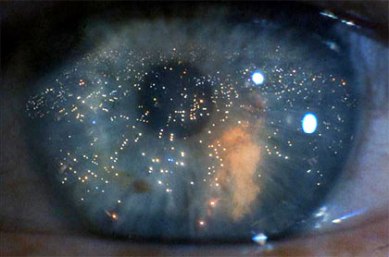 I was not under the influence of any drugs, nor had I been previous to the incident. I had one beer that night.
I was not under the influence of any drugs, nor had I been previous to the incident. I had one beer that night.
One other note: I will leave the determination of who the “she” and the “we” were in the experience to the interpretation of the reader. I certainly don’t know for sure who she and they were, though I have my ideas — all of them highly positive. Also, the following, except for some minor editing, is exactly the way I wrote it the morning following the experience.
Journal Entry of June 28, 1980:
I was lying in bed last night with Maddie. Couldn’t sleep, air conditioner too loud. Suddenly I was aware of all this energy coursing through my body. Was really scaring me.  My body zinging, intense ringing (buzzing?) in my ears, rushes flowing through me. Was scared I was going crazy, would hurt Maddie, would become possessed or something, etc. Tried focusing on my third eye so as to control it like I did in Portland.
My body zinging, intense ringing (buzzing?) in my ears, rushes flowing through me. Was scared I was going crazy, would hurt Maddie, would become possessed or something, etc. Tried focusing on my third eye so as to control it like I did in Portland.
That may have helped some, but I could sense, and was scared of, other “presences” in the room. I thought I heard a woman’s voice behind me over my left shoulder and that scared me. Without realizing the transition, I found myself projected into this panorama of history and a woman’s voice was narrating.

 She described how once there had lived “noble” beings. I could see vast and colorful panoramas of peoples exuding “nobility” and “integrity” (for
She described how once there had lived “noble” beings. I could see vast and colorful panoramas of peoples exuding “nobility” and “integrity” (for  want of better words to describe what they were like). They walked and paraded before me and were all around me.
want of better words to describe what they were like). They walked and paraded before me and were all around me.
Then the woman explained that the peoples degenerated and, as if in demonstration, I began seeing battles and wars played out before my eyes. I was in the midst of them!
However, I was still aware that I was in my body lying on my bed, because I could feel myself against it.  Even so I was afraid that I would begin taking on the bodies of participants in the battles and would feel pain like they were obviously feeling. This feeling was especially strong when I was in the midst of the convergence of two groups of warring parties (their garb reminded me of Israelites or people of Biblical times or something). The group I was facing were going at each other with hatchets and I was afraid of becoming a participant and possibly feeling an ax chunking into my neck or skull. But although it was happening all around me, nobody in the crowd noticed me; it was as if I wasn’t there. In fact at one point I believe they actually may have passed through me!
Even so I was afraid that I would begin taking on the bodies of participants in the battles and would feel pain like they were obviously feeling. This feeling was especially strong when I was in the midst of the convergence of two groups of warring parties (their garb reminded me of Israelites or people of Biblical times or something). The group I was facing were going at each other with hatchets and I was afraid of becoming a participant and possibly feeling an ax chunking into my neck or skull. But although it was happening all around me, nobody in the crowd noticed me; it was as if I wasn’t there. In fact at one point I believe they actually may have passed through me!
 This scene passed, along with other dramas, and it was explained to me that now it was time for a regeneration of peoples on this “plane[?]” to regain their former “nobility[?],” “integrity[?]” (again for lack of better words).
This scene passed, along with other dramas, and it was explained to me that now it was time for a regeneration of peoples on this “plane[?]” to regain their former “nobility[?],” “integrity[?]” (again for lack of better words).
Still feeling that I was conscious, i.e., knowing that it was all happening to 
 me while I was really lying in bed; I let myself walk through many landscapes and
me while I was really lying in bed; I let myself walk through many landscapes and  terrains, which I felt I could easily have lived in at one
terrains, which I felt I could easily have lived in at one  time and which I felt had all existed at some time or place or did now exist somewhere in the world or
time and which I felt had all existed at some time or place or did now exist somewhere in the world or  Universe. I walked through small shack towns. I remember a
Universe. I walked through small shack towns. I remember a  small group of bedraggled people huddled together in one. There were many kinds of pastoral settings also: some beautiful with rolling, lush hills, and some not
small group of bedraggled people huddled together in one. There were many kinds of pastoral settings also: some beautiful with rolling, lush hills, and some not 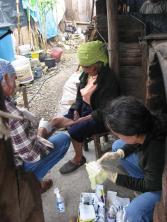 as beautiful — rocky terrain, etc.
as beautiful — rocky terrain, etc. All seemed to be viable habitats for different people. I had the thought that these may have been places/lives that I had lived in at one time.
All seemed to be viable habitats for different people. I had the thought that these may have been places/lives that I had lived in at one time.
 Certain places brought up bad feelings in me, foreboding, scared feelings. In fact it can be said that the whole time it was happening I was scared about the experience. I feared meeting some dangerous and evil entity or being stuck in an undesirable place. When I was in one particular environ/habitat that wasn’t very pleasant, I remembered something that Seth had said about consciously altering and changing his environment. In line with that I decided to stop believing in the one that I was in and see what happened.
Certain places brought up bad feelings in me, foreboding, scared feelings. In fact it can be said that the whole time it was happening I was scared about the experience. I feared meeting some dangerous and evil entity or being stuck in an undesirable place. When I was in one particular environ/habitat that wasn’t very pleasant, I remembered something that Seth had said about consciously altering and changing his environment. In line with that I decided to stop believing in the one that I was in and see what happened.
What happened was that environment went away and then there was a blank grayness as I waited for a new scene to appear. I continued to be aware that I was in a trancelike state and that I had a body lying in bed. I would at times vaguely return to the feeling in my body and would feel myself on my back, hands and arms outstretched, mattress against my back, in a very deep state of relaxation and suspended animation which had a feeling of heaviness or deadness about it. My body didn’t need to move and it was perfectly comfortable.
I continued to be aware that I was in a trancelike state and that I had a body lying in bed. I would at times vaguely return to the feeling in my body and would feel myself on my back, hands and arms outstretched, mattress against my back, in a very deep state of relaxation and suspended animation which had a feeling of heaviness or deadness about it. My body didn’t need to move and it was perfectly comfortable.
I could hear the air conditioner running, also, and even Maddie’s breathing next to me. Several times, I don’t remember exactly when, Maddie had reached over and put her arm around me, both times only for an instant, before she rolled back away from me. Neither of the times did it disturb the deep state that I was in or cause me to rise at all out of it.  I simply felt warm and good towards her at the affection she was showing me. I even had the thought that, considering the fact that she only did it for a moment before turning away, that somehow she knew what was going on, in some deeper, nonconscious part of herself, and was reassuring or encouraging me.
I simply felt warm and good towards her at the affection she was showing me. I even had the thought that, considering the fact that she only did it for a moment before turning away, that somehow she knew what was going on, in some deeper, nonconscious part of herself, and was reassuring or encouraging me.
Anyway, I was securely very deep and felt that I wasn’t going to be suddenly disturbed from it unless, perhaps, I let it. But I really didn’t want to do that. I was rather scared and apprehensive most of the time, as mentioned, but, more importantly, it was all so damned interesting!

 There is no doubt that I was thoroughly enjoying the color, the panorama, the expanse and freedom of consciousness, the fact that I was experiencing something important and that I had never experienced before, so that I dearly wanted to stay there despite the fear.
There is no doubt that I was thoroughly enjoying the color, the panorama, the expanse and freedom of consciousness, the fact that I was experiencing something important and that I had never experienced before, so that I dearly wanted to stay there despite the fear.
 Sometime after the gray place, I believe it was, I was aware of some kind of light far off in the distance that I could travel to if I liked. At around that time I could hear Maddie saying to somebody (about my body in bed): “Is he moving at all? Is he breathing? Do you think he’s dead?” and so on. I remember thinking to myself how silly that sounded and that “No, I’m not dead, I’m just in this deep trance and everything.” But then suddenly I began to wonder if maybe I was dead! It had all been so strange that maybe I had actually died in my sleep!
Sometime after the gray place, I believe it was, I was aware of some kind of light far off in the distance that I could travel to if I liked. At around that time I could hear Maddie saying to somebody (about my body in bed): “Is he moving at all? Is he breathing? Do you think he’s dead?” and so on. I remember thinking to myself how silly that sounded and that “No, I’m not dead, I’m just in this deep trance and everything.” But then suddenly I began to wonder if maybe I was dead! It had all been so strange that maybe I had actually died in my sleep!
 At that point I recalled the accounts I’d heard and read about of people dying and not knowing they were dead, how they would often hang around and watch other people’s reaction to their death (and this could go on for days). I remembered how Steve had once told me something to the extent that if that should happen that one shouldn’t get carried away and fascinated by the after-death state but that one should “get down on one’s knees” (figuratively speaking) and search out the source and the presence of God. Thinking that was perhaps when I actually looked around and saw the light.
At that point I recalled the accounts I’d heard and read about of people dying and not knowing they were dead, how they would often hang around and watch other people’s reaction to their death (and this could go on for days). I remembered how Steve had once told me something to the extent that if that should happen that one shouldn’t get carried away and fascinated by the after-death state but that one should “get down on one’s knees” (figuratively speaking) and search out the source and the presence of God. Thinking that was perhaps when I actually looked around and saw the light.
At any rate, I found myself wondering if I wanted to be dead. This place was certainly an interesting one, even with the apprehensions. And it sure seemed to be a change (so far, anyway) from the constant struggling to survive and grow. But I also felt that there were just so many loose ends left unresolved in my life.  There were so many areas that I’d made good progress in but had not yet taken to completion. My love for Maddie (next to me), which was only just beginning, came to my mind as an example.
There were so many areas that I’d made good progress in but had not yet taken to completion. My love for Maddie (next to me), which was only just beginning, came to my mind as an example.
And so I decided to find out if I was dead or not, both to know if I should go heading for the light (if I was) or to reassure Maddie (if I wasn’t). I determined to get into my body and, with an effort and strain, I forced myself up from the depths, forcing my body to move and sit up. I was mildly surprised to find that I was able to do this, bringing myself into physicality and into a half-sitting position.  In this position I looked over to see Maddie sleeping next to me, I could hear the air conditioner whining, and so forth. I realized then that she hadn’t “physically” been sitting over me, talking about me, but I also felt that some part of her must have. (We used to have this thing when we slept together that often we would feel like we had been communicating with each other on some kind of subconscious level the whole night long. We wouldn’t ever remember all that we had said but we would often both remark about it the next morning).
In this position I looked over to see Maddie sleeping next to me, I could hear the air conditioner whining, and so forth. I realized then that she hadn’t “physically” been sitting over me, talking about me, but I also felt that some part of her must have. (We used to have this thing when we slept together that often we would feel like we had been communicating with each other on some kind of subconscious level the whole night long. We wouldn’t ever remember all that we had said but we would often both remark about it the next morning).
Realizing that I wasn’t dead, I lay back down and let myself drift back into the deepness.  All I remember, after this point, is talking to Maddie, probably about what had happened to me, explaining it to her, though I’m not sure that was all of it. Also I remember at least one other time, maybe two, forcing myself to waking consciousness to see if Maddie was awake (as if in an experiment), because it really seemed that we were actually, physically awake and talking to each other. I thought we were lying in bed physically talking. It was hard to believe it when I forced myself awake only to find her lying beside me asleep.
All I remember, after this point, is talking to Maddie, probably about what had happened to me, explaining it to her, though I’m not sure that was all of it. Also I remember at least one other time, maybe two, forcing myself to waking consciousness to see if Maddie was awake (as if in an experiment), because it really seemed that we were actually, physically awake and talking to each other. I thought we were lying in bed physically talking. It was hard to believe it when I forced myself awake only to find her lying beside me asleep.
After that there were some actual dreams, quite different from what had been going on earlier. I fell into sleeping and dreamed of being in my Grandmother’s home. I remember reading a book, sitting in a chair in her kitchen. There were other people there also; they were sitting in the same kind of straight-backed, none-too-comfortable wooden chairs.
I remember that early on, when I was doing all the traveling and stuff, that I didn’t know how I’d possibly remember all the experiences that happened to me and all the things that I saw and learned. It seemed like a lot of time was crammed into that short period. I remembered hoping just that I would retain as much of it as I could, especially hoping that I wouldn’t just blot it all out as it felt important.
Don’t Despair, There Are Others Doing It With You, and We’re Here, Too

 I feel like the meaning of the part about the regeneration of the peoples on this plane was an answer to my despair at working on getting through my feelings. It’s like it was
I feel like the meaning of the part about the regeneration of the peoples on this plane was an answer to my despair at working on getting through my feelings. It’s like it was  saying:
saying:  “Sure it’s hard! What you’re talking about is the reversal of hundreds of generations of degenerate and violent habit, custom, and activity. But we’re talking about changing that also, and you’re not the only one working at it. There are many others in your time period struggling to do it just like you.”
“Sure it’s hard! What you’re talking about is the reversal of hundreds of generations of degenerate and violent habit, custom, and activity. But we’re talking about changing that also, and you’re not the only one working at it. There are many others in your time period struggling to do it just like you.”
And the feeling that left me with was/is “So don’t despair. There are others like you doing it, and we’re (out here) helping you too.”
Sins of The Father
Now, having conveyed what I wrote the morning after the experience, I wish to add that regardless of how you may wish to label the preceding experience, it remains one whose message has stayed with me through all the intervening years — thirty-two of them in fact. It is a message that has rung true and helped me through other difficult spaces.  Indeed, I still reflect on it and can’t help believing there is a lot to it. Consider: Generation after generation of Western culture has engaged — with little awareness of the consequences — in passing down their personal pain and trauma, in some form or other, onto their offspring. And they in turn dump it on theirs. We know that child abusers were themselves abused as children; but this is just a very blatant example of how the pattern operates. On and on and back through into hazy unrecorded history this situation has existed; this vicious cycle has perpetuated itself.
Indeed, I still reflect on it and can’t help believing there is a lot to it. Consider: Generation after generation of Western culture has engaged — with little awareness of the consequences — in passing down their personal pain and trauma, in some form or other, onto their offspring. And they in turn dump it on theirs. We know that child abusers were themselves abused as children; but this is just a very blatant example of how the pattern operates. On and on and back through into hazy unrecorded history this situation has existed; this vicious cycle has perpetuated itself.

 But many of us in these extraordinary times, and goaded on by the specter of global catastrophe, for one thing are saying: “Let it end with me!”; “Let us not continue this madness any further!”
But many of us in these extraordinary times, and goaded on by the specter of global catastrophe, for one thing are saying: “Let it end with me!”; “Let us not continue this madness any further!”  Attempting to break the cycle of “kill and be killed,” of hurting and then inflicting hurt, attempting to halt the prevailing insanity, we make the Gandhian effort to take the energy into ourselves, to change ourselves lest we, also, be like the generation before — forever passing on the insane legacy.
Attempting to break the cycle of “kill and be killed,” of hurting and then inflicting hurt, attempting to halt the prevailing insanity, we make the Gandhian effort to take the energy into ourselves, to change ourselves lest we, also, be like the generation before — forever passing on the insane legacy.
So why should we think this would be easy?! We are trying to bring to an end, in our single lifetimes, the accumulated results of untold generations of our ancestors dumping their pain and insanity onto their descendants.
But Always Are We Here Helping
So of course it’s hard! And for me to realize this fact allows me to accept it. That is, it allows me to accept this task and to take up my place in the ranks of those arrayed in the purpose of undoing the craziness rather than to turn away in despair at the immensity of the task or to quaver in paralysis before it.
 This experience has also provided me with a wonderful outlook on the people around me. I look around to the many people who are working spiritually to change themselves and this crazy world — who are serving,
This experience has also provided me with a wonderful outlook on the people around me. I look around to the many people who are working spiritually to change themselves and this crazy world — who are serving, 
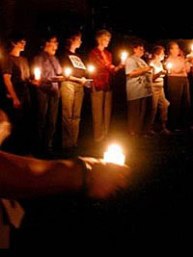 mending, and healing others and themselves. In doing so I have this sense of brother/sisterhood — that we are all engaged in an immense undertaking . . . that we are synergizing our energies in an endeavor which is not merely crucial, it is imperative . . . not just for our personal growth, for our personal satisfaction or well-being — although that’s not to be discounted — it is necessary for the very survival of this planet.
mending, and healing others and themselves. In doing so I have this sense of brother/sisterhood — that we are all engaged in an immense undertaking . . . that we are synergizing our energies in an endeavor which is not merely crucial, it is imperative . . . not just for our personal growth, for our personal satisfaction or well-being — although that’s not to be discounted — it is necessary for the very survival of this planet.
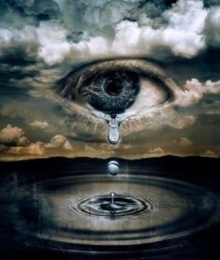
 I feel that if this task had been easier it would have been done long ago by well-intentioned ancestors. Indeed, it may only be because the survival of this planet is now at stake that substantial numbers of us have at this point, finally, accepted the challenge.
I feel that if this task had been easier it would have been done long ago by well-intentioned ancestors. Indeed, it may only be because the survival of this planet is now at stake that substantial numbers of us have at this point, finally, accepted the challenge.
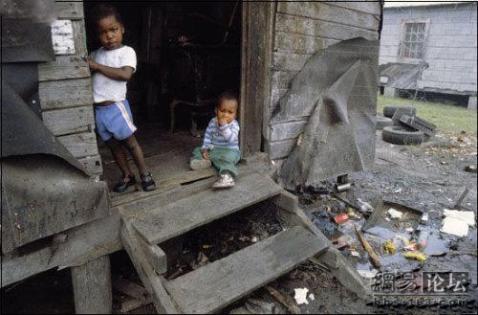 Many of us are aware of the seeming intractability of the situation we face — both personally and globally. But what I feel now is not so much the despair at the difficulty of the task but rather, because of what I was taught through this experience, I feel a sense of belongingness,
Many of us are aware of the seeming intractability of the situation we face — both personally and globally. But what I feel now is not so much the despair at the difficulty of the task but rather, because of what I was taught through this experience, I feel a sense of belongingness,  cosmic belongingness, if you will . . . a sense that I’m not alone. I feel that many others are working at this same thing in this day and age. Our combined energies — along with the energies of the Universe that are working with us — together constitute an incredible force. Confronted with the enterprise we have before us, this force may just be sufficient to do on this planet what has never been done before here (as far as we know).
cosmic belongingness, if you will . . . a sense that I’m not alone. I feel that many others are working at this same thing in this day and age. Our combined energies — along with the energies of the Universe that are working with us — together constitute an incredible force. Confronted with the enterprise we have before us, this force may just be sufficient to do on this planet what has never been done before here (as far as we know).
So to all who occasionally despair, I can only repeat, “Sure it’s hard, but always are we here helping you.”
Continue with Vision Quests, UFO Abductions, Brainwashings, and Boot Camps: Ritual As Shadow, Part Nine — Initiation, Authentic and Inauthentic
Return to “You Shall Know the Truth and the Truth Shall Make You Free” … What Real and Unritualized Spiritual Experience Looks Like
Invite you to join me on Twitter:
http://twitter.com/sillymickel
friend me on Facebook: https://www.facebook.com/sillymickel
How We Re-Create Human Prenatal Irritation and Burning in a Polluted Planet: Diagnosis, Prognosis, and What to Do About Toxic Womb ~ Toxic Earth
Posted by sillymickel in activism, authenticity, being yourself, Class, economics, Generations, globalrevolution, History, individualism, life, meaning, nonconform, occupywallstreet, Politics, psychology, spirituality on February 17, 2013
Roots of Apocalypse — We Stood Up — and Why Humans Defecate Where They Sleep: We Need to Face the Monsters of Our Creation … Earth to Humans – Wake the F#$% Up!
Wounded Deer and Centaurs, Chapter Eleven: Toxic Womb ~ Toxic World … Gaia Is Calling
Toxic Womb ~ Toxic Earth: How We Manifest Prenatal Irritation and Burning in Environmental Destruction and Why Humans Are Compelled to Poop Where They Sleep.
Toxic Womb ~ Toxic Earth … How We Re-Create Human Prenatal Irritation/Burning in a Polluted Planet … Diagnosis and Prognosis
Environmentally We Act Out
The second aspect of prenatal irritation/revulsion is, We can’t get rid of poisons that build up in the environment around us…like a prenatal environmental pollution. We can’t eliminate wastes as efficiently.
Toxic Womb ~ Toxic World
 I’ve written a lot about this in other places of this blog/book. I’ve talked at length about how we act out the deprivation part of late gestation experience in global suffocation, greenhouse effect by focusing on the reductions of oxygen. But remember that there are slight increases of carbon dioxide with the reduced blood flow for the prenate:
I’ve written a lot about this in other places of this blog/book. I’ve talked at length about how we act out the deprivation part of late gestation experience in global suffocation, greenhouse effect by focusing on the reductions of oxygen. But remember that there are slight increases of carbon dioxide with the reduced blood flow for the prenate: These are a big part of the increase in waste matter, consequent upon a reduced efficiency of eliminating toxins. So, obviously this is analogous to the way we have created such an increase in carbon dioxide in our atmosphere called the greenhouse effect. We’ve done a good job of manifesting this…not easy to do. And we should be congratulated if it were actually a good thing and not another way we have become good at self-destruction.
These are a big part of the increase in waste matter, consequent upon a reduced efficiency of eliminating toxins. So, obviously this is analogous to the way we have created such an increase in carbon dioxide in our atmosphere called the greenhouse effect. We’ve done a good job of manifesting this…not easy to do. And we should be congratulated if it were actually a good thing and not another way we have become good at self-destruction.

 We re-create the bad blood aspects of fetal malnutrition in air pollution. I can tell you from much personal experience in Southern California that indeed it re-creates the sensations of sickness at times. And this is when it is obvious to me; here I’m asserting that it is stimulating unconscious memories of discomfort even when we are not aware of being sickened, consciously.
We re-create the bad blood aspects of fetal malnutrition in air pollution. I can tell you from much personal experience in Southern California that indeed it re-creates the sensations of sickness at times. And this is when it is obvious to me; here I’m asserting that it is stimulating unconscious memories of discomfort even when we are not aware of being sickened, consciously.
So that’s deprivation and bad blood…of course the other aspect of late gestation is crowdedness, which I’ve also dealt with earlier at length.
Prenatal Burning
 So now, here let us just look at some of the ways we re-create, specifically, those irritating, burning sensations in our environment—the fourth aspect of late gestation comfort and the third of fetal malnutrition. I mentioned in a previous post how we sit out in the sun and endure discomfort—sun bathing—in some odd re-creation of fetal irritation.
So now, here let us just look at some of the ways we re-create, specifically, those irritating, burning sensations in our environment—the fourth aspect of late gestation comfort and the third of fetal malnutrition. I mentioned in a previous post how we sit out in the sun and endure discomfort—sun bathing—in some odd re-creation of fetal irritation. 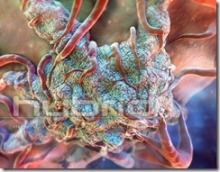 The most obvious environmental correspondence with that is the way we have thinned out our protection from the sun, so now we can better be harmed by UV rays. With the huge reductions in our ozone layer, we are insuring an increased burning of our skin and epidemics of skin cancer—not very comfortable I would imagine.
The most obvious environmental correspondence with that is the way we have thinned out our protection from the sun, so now we can better be harmed by UV rays. With the huge reductions in our ozone layer, we are insuring an increased burning of our skin and epidemics of skin cancer—not very comfortable I would imagine.
We have managed to surround ourselves with the prospect of burning up in a fiery inferno at any moment because of nuclear weapons we have created out of the suicidal deliriums of some of us. That would be prenatal burning acted out to the infinite power.
Prenatal Irritation
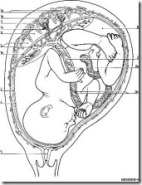 Some of this is the most obvious of all: Toxic Womb
Some of this is the most obvious of all: Toxic Womb  Environment leads to Toxic Environment. Again, good job, humans! If it were some kind of achievement. We have created a worldwide toxic womb,
Environment leads to Toxic Environment. Again, good job, humans! If it were some kind of achievement. We have created a worldwide toxic womb, 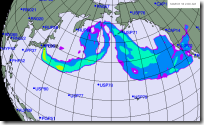 with a fractal equivalent of the situation in the womb—a buildup of poisons that cannot be eliminated anywhere: There is no longer any “away” to remove it to.
with a fractal equivalent of the situation in the womb—a buildup of poisons that cannot be eliminated anywhere: There is no longer any “away” to remove it to.
We have air pollution, water pollution, food pollution, radiation pollution…. We are polluting the genetic codes of biological organisms on Earth…. We are polluting our land by fracking, so water sent through it will poison us and catch fire…. If there’s anything else, well, I’m sure we’re polluting it somehow or other.
Just How Long Can You Not “Step In It” – 250,000 Years?
 We have become the filthiest of species, essentially pooping in our own nests. We have landfills that overflow and encroach on residences, ticking time bombs of nuclear waste matter that have to be guarded for 250,000 years.
We have become the filthiest of species, essentially pooping in our own nests. We have landfills that overflow and encroach on residences, ticking time bombs of nuclear waste matter that have to be guarded for 250,000 years. 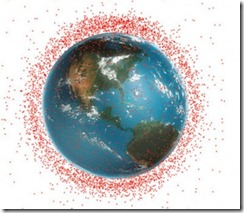 That’s a long time to have to avoid “stepping in it,” wouldn’t you say? And we are polluting and
That’s a long time to have to avoid “stepping in it,” wouldn’t you say? And we are polluting and  killing our oceans, creating the closest thing of all to a toxic, poisonous placenta, as from it, ultimately, we suck our necessary O2 and H20.
killing our oceans, creating the closest thing of all to a toxic, poisonous placenta, as from it, ultimately, we suck our necessary O2 and H20.
Compartmentalizing Our Doom
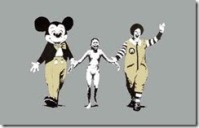 I could go on but you get the point. We’ve done a great job of re-creating the discomfort of the toxic womb.
I could go on but you get the point. We’ve done a great job of re-creating the discomfort of the toxic womb. 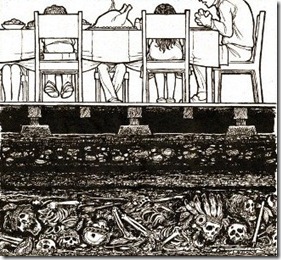 And, as I said, yes we are sickened, whether we acknowledge it or not. And what I’ve observed is that even the most intelligent of us is trying like crazy to NOT acknowledge it, using all manner of denials and defensive maneuvers of consciousness. If nothing else, about our discomfort and its causes, we are “compartmentalizing” so we can go on with our lives.
And, as I said, yes we are sickened, whether we acknowledge it or not. And what I’ve observed is that even the most intelligent of us is trying like crazy to NOT acknowledge it, using all manner of denials and defensive maneuvers of consciousness. If nothing else, about our discomfort and its causes, we are “compartmentalizing” so we can go on with our lives.
Nature Balances HerSelf
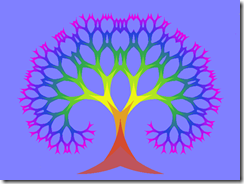 We have done such a good job of creating the “toxic womb” in our planetary environment you have to marvel at the perfection of its replication. And with such perfection, there are reasons.
We have done such a good job of creating the “toxic womb” in our planetary environment you have to marvel at the perfection of its replication. And with such perfection, there are reasons. As I’ve been saying, we re-create that which we need to experience. So, as we do this, we are creating the exact situation that we need to face
As I’ve been saying, we re-create that which we need to experience. So, as we do this, we are creating the exact situation that we need to face  in our earliest lives in order to heal them…and in this lies the hope. In fact, looking ahead, I will be telling you that this is the key to a solution for us. As I say, Nature Balances HerSelf, and we are part of her. We may or may not make it as a species, but certainly it looks like we are in the process of something that is perfectly set up to wake us into consciousness of what we need to heal, if we heed it.
in our earliest lives in order to heal them…and in this lies the hope. In fact, looking ahead, I will be telling you that this is the key to a solution for us. As I say, Nature Balances HerSelf, and we are part of her. We may or may not make it as a species, but certainly it looks like we are in the process of something that is perfectly set up to wake us into consciousness of what we need to heal, if we heed it.
Toxic Earth – Prognosis: We’ve Created Our Own “Monsters” and Roots of Apocalypse – We Stood Up!
We’ve Created Our Own “Monsters”; How We View Them Is Up to Us … Toxic Earth – Prognosis
Roots of Apocalypse—We Stood Up
 Basically, it warmed up pretty good in the interior of Africa millions of years ago, so our forebears headed “to the beach”—to the ocean shores, swamps, and lakes—where it was more bearable. We foraged for food in the shallow waters and found it beneficial to stand upright, for it allowed us to go into deeper waters and gather more, and for longer periods. Naturally over time bipedalism traits were the ones that won out through natural selection.
Basically, it warmed up pretty good in the interior of Africa millions of years ago, so our forebears headed “to the beach”—to the ocean shores, swamps, and lakes—where it was more bearable. We foraged for food in the shallow waters and found it beneficial to stand upright, for it allowed us to go into deeper waters and gather more, and for longer periods. Naturally over time bipedalism traits were the ones that won out through natural selection.
 But when we became a standing species, it added birth trauma and premature birth to our “species set.” For with this rearrangement of our posture, we created a narrower pelvic opening and our prenates no longer hung loosely below us but pressed down upon the arteries below to create the fetal malnutrition, which I’ve been discussing in the previous 22 sections. The prematurity of birth was caused by the narrower pelvic opening, as the baby needed to leave the womb earlier than other species in order to make it out. This meant that we would do a great deal of our early life’s learning and development—much more than any other species—outside of the womb and in the context of society, not Nature; this is called secondary altriciality, which is something unique about humans.
But when we became a standing species, it added birth trauma and premature birth to our “species set.” For with this rearrangement of our posture, we created a narrower pelvic opening and our prenates no longer hung loosely below us but pressed down upon the arteries below to create the fetal malnutrition, which I’ve been discussing in the previous 22 sections. The prematurity of birth was caused by the narrower pelvic opening, as the baby needed to leave the womb earlier than other species in order to make it out. This meant that we would do a great deal of our early life’s learning and development—much more than any other species—outside of the womb and in the context of society, not Nature; this is called secondary altriciality, which is something unique about humans.

 With all of these developments — prenatal fetal malnutrition, premature birth, and secondary altriciality—we had greater pain and trauma at the beginning of our lives than any other
With all of these developments — prenatal fetal malnutrition, premature birth, and secondary altriciality—we had greater pain and trauma at the beginning of our lives than any other  species. We needed to grow a bigger brain—with an additional brain structure,
species. We needed to grow a bigger brain—with an additional brain structure, vastly multiplied neural pathways, and a split brain—to deal with this pain in order to survive. The larger skull added further to birth trauma; it was even more difficult to get through the pelvic opening, and so it required even more prematurity of birth.
vastly multiplied neural pathways, and a split brain—to deal with this pain in order to survive. The larger skull added further to birth trauma; it was even more difficult to get through the pelvic opening, and so it required even more prematurity of birth.
 All this development outside the womb and increased brain size resulted in language and culture, with all its complexities.
All this development outside the womb and increased brain size resulted in language and culture, with all its complexities. Split off from horrible early pains and discomforts, our minds created substitute reflections of our early memories in our cultural products. We created an artificial consciousness construct—an Ego—as an intermediary between the impulses from our insides, emanating from early discomforts, and the stimulus and information coming to us from our current reality.
Split off from horrible early pains and discomforts, our minds created substitute reflections of our early memories in our cultural products. We created an artificial consciousness construct—an Ego—as an intermediary between the impulses from our insides, emanating from early discomforts, and the stimulus and information coming to us from our current reality.
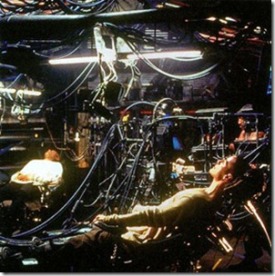
 Its egoic product — that is, what we end up thinking is real — would be the distorted amalgamation of the past — early pain and the learning built on early discomforts — and the present—our present-time situational reality, including the twisted cultural products within and without. So what the Ego came up with would not be true, for its purpose would be to allow us to survive, regardless of bothersome early imprints.
Its egoic product — that is, what we end up thinking is real — would be the distorted amalgamation of the past — early pain and the learning built on early discomforts — and the present—our present-time situational reality, including the twisted cultural products within and without. So what the Ego came up with would not be true, for its purpose would be to allow us to survive, regardless of bothersome early imprints.

 We called the accumulation of cultural product the “advance of man,” and patted ourselves on the back for our Promethean achievements, deeming ourselves superior to Nature. To congratulate ourselves, we needed to ignore all the evidence of savagery on a scale not seen in the rest of our world, which we perpetrated on each other and on the world of Nature.
We called the accumulation of cultural product the “advance of man,” and patted ourselves on the back for our Promethean achievements, deeming ourselves superior to Nature. To congratulate ourselves, we needed to ignore all the evidence of savagery on a scale not seen in the rest of our world, which we perpetrated on each other and on the world of Nature.

 In all this abominable acting out, we were manifesting aspects of our early pain that we were clueless about, and so created a mirror image of our early experience and its horrific pain and trauma in Reality itself. So it is that, all our early
In all this abominable acting out, we were manifesting aspects of our early pain that we were clueless about, and so created a mirror image of our early experience and its horrific pain and trauma in Reality itself. So it is that, all our early 
 trauma has led us to unthinkingly plod to the edge of oblivion, as we re-create war, fascism, class war, racism and bigotry, environmental pollution, nuclear radiation, loss of ozone layer, threat of nuclear war, and all the rest of the dire threats I’ve been discussing as being act outs of our early prenatal discomforts—crowdedness, deprivation, disgust, and irritation/burning.
trauma has led us to unthinkingly plod to the edge of oblivion, as we re-create war, fascism, class war, racism and bigotry, environmental pollution, nuclear radiation, loss of ozone layer, threat of nuclear war, and all the rest of the dire threats I’ve been discussing as being act outs of our early prenatal discomforts—crowdedness, deprivation, disgust, and irritation/burning.
So, we stood upright; and now, unless something radical happens, it will lead to the end of life for ourselves and possibly everything else on this planet in short order.
What can we do about it? Strangely, many of us are determined to just die. But if you are one of those who would prefer not to, well, going up against all the others, don’t think it will be easy. But if you wish to fight to live, here is the starting point for effective change, which would actually save our lives and those of future generations and which comes out of this understanding of the early psychological roots of our otherwise apocalyptic propulsion:
We Always Create Our Own “Monsters”—How We View Them Is Up to Us
As mentioned in the last section, we always create around us a reflection of the kinds of issues we need to deal with “on our insides.” We have always done this, as a species.
They Can Be the Like the Wake-Up Knock from a Master

 But we have added stimulus for these feelings today; we have greater prods to our waking up than ever before in our history. These will either be knocks on the head to get us to “pay attention”—as a Zen master might give to one of his students—or they will be the blow that will end our existence… It’s up to us.
But we have added stimulus for these feelings today; we have greater prods to our waking up than ever before in our history. These will either be knocks on the head to get us to “pay attention”—as a Zen master might give to one of his students—or they will be the blow that will end our existence… It’s up to us.
 For as always, we both re-create and resist that which we have unresolved. In terms of oxygen “starvation” prior to birth, we both create and are made uncomfortable by air pollution…toxic air.
For as always, we both re-create and resist that which we have unresolved. In terms of oxygen “starvation” prior to birth, we both create and are made uncomfortable by air pollution…toxic air.  Much like creating crushing populations, as discussed in a previous post , we create suffocating global air pollution for us to
Much like creating crushing populations, as discussed in a previous post , we create suffocating global air pollution for us to  continually be triggered into uncomfortable unresolved feelings from our early lives. So, it is not like we are not being reminded of what we need to do—on both our “insides” as well as our “outsides.” We will never need a to-do list for this.
continually be triggered into uncomfortable unresolved feelings from our early lives. So, it is not like we are not being reminded of what we need to do—on both our “insides” as well as our “outsides.” We will never need a to-do list for this.
How Can You “Let It Go” If You Won’t “Pick It Up”? Toxic Womb/ Toxic Earth … Prospects.
We Need to Face the Monsters of Our Creation … What to Do About Toxic Womb ~ Toxic Earth
Gaia Calling
Earth to Humans – Wake the F#$% Up!

 Many ignore the warning blows, however, no matter how severely they are felt. There is huge denial about climate change, the invisible death upon us from Fukushima, and just about all the things I’ve been bringing up as important to look at, regardless how many deaths from tornadoes, tsunamis, and the rest. And from some quarters this refusal to see is deep, batshit crazy, and thoroughly intractable.
Many ignore the warning blows, however, no matter how severely they are felt. There is huge denial about climate change, the invisible death upon us from Fukushima, and just about all the things I’ve been bringing up as important to look at, regardless how many deaths from tornadoes, tsunamis, and the rest. And from some quarters this refusal to see is deep, batshit crazy, and thoroughly intractable.
But now it’s at least understandable. And as with everything else, knowing the nature of something gives us an edge.
The Tea Party and Anti-Abortion Type Response

 But at this point can you see why the “worst” of us—the sickest in terms of being pushed around by such early pain—would not want to do anything about these environmental problems?
But at this point can you see why the “worst” of us—the sickest in terms of being pushed around by such early pain—would not want to do anything about these environmental problems?  Can you see why the most afflicted of us are fixated on the abortion issue…here pointing exactly to the source of their discomfort…that is, in their lives as fetuses?
Can you see why the most afflicted of us are fixated on the abortion issue…here pointing exactly to the source of their discomfort…that is, in their lives as fetuses? We would think theirs to be an honest concern for prenates driven purely by compassion were it not for the fact that these same people have little sympathy—in fact, the opposite!—for the folks already born, around them, who are suffering.
We would think theirs to be an honest concern for prenates driven purely by compassion were it not for the fact that these same people have little sympathy—in fact, the opposite!—for the folks already born, around them, who are suffering.
How Can You “Let It Go” If You Won’t Pick It Up?

 One must have less of this fetal pain originally or have resolved more of it by facing, feeling, standing and dealing with
One must have less of this fetal pain originally or have resolved more of it by facing, feeling, standing and dealing with  it…not running away from it…and working through these uncomfortable unresolved feelings which arise inside oneself for one to have any kind of distance from their pushes and pulls, their sway, to tackle these problems and not wish to keep bringing them about and keep making oneself suffer. That is, one needs to deal with
it…not running away from it…and working through these uncomfortable unresolved feelings which arise inside oneself for one to have any kind of distance from their pushes and pulls, their sway, to tackle these problems and not wish to keep bringing them about and keep making oneself suffer. That is, one needs to deal with  something before one can stop oneself from reminding oneself that one needs to deal with that something. Why would one think one can “go beyond” something by simply ignoring it, “letting it go,” or imagining, “meditating,” or even praying it away? It just doesn’t work like that.
something before one can stop oneself from reminding oneself that one needs to deal with that something. Why would one think one can “go beyond” something by simply ignoring it, “letting it go,” or imagining, “meditating,” or even praying it away? It just doesn’t work like that.
 The other night I woke in the middle of the night, feeling annoyed that I had not gotten a good night’s sleep. I felt irritated, and my mind went on about how this lack of sleep was going to affect my work, was going to stress my heart and contribute to other health complications, and would generally be a drag on my well-being and happiness, as I needed to catch up on some sleep I hadn’t gotten lately. Eventually, my mind came around to how I felt. I noticed I was perspiring a little: I was
The other night I woke in the middle of the night, feeling annoyed that I had not gotten a good night’s sleep. I felt irritated, and my mind went on about how this lack of sleep was going to affect my work, was going to stress my heart and contribute to other health complications, and would generally be a drag on my well-being and happiness, as I needed to catch up on some sleep I hadn’t gotten lately. Eventually, my mind came around to how I felt. I noticed I was perspiring a little: I was  warm. That had made me feel uncomfortable. I also realized I was uncomfortable on the bed as I had allowed the bedclothes to get all bunched up beneath me in a way that didn’t feel good.
warm. That had made me feel uncomfortable. I also realized I was uncomfortable on the bed as I had allowed the bedclothes to get all bunched up beneath me in a way that didn’t feel good. I had unwittingly created some “prenatal discomfort” for myself. While I didn’t feel like I could do anything to get back to sleep, I did attend to removing some layers, so as to be cooler, and straightening out my bed so it would be flatter and more comfortable. And you know what? I feel asleep for an additional five hours and caught up on my sleep.
I had unwittingly created some “prenatal discomfort” for myself. While I didn’t feel like I could do anything to get back to sleep, I did attend to removing some layers, so as to be cooler, and straightening out my bed so it would be flatter and more comfortable. And you know what? I feel asleep for an additional five hours and caught up on my sleep.
 I know, this sounds like a silly example. But if you understand like I do the roots of our apocalypse and the utter self-destructive stupidity of humans’ behavior and
I know, this sounds like a silly example. But if you understand like I do the roots of our apocalypse and the utter self-destructive stupidity of humans’ behavior and the mind-blowing absurdity of the reality we have constructed in order to keep from seeing our problems, you can’t help but be struck with how simple and obvious and everywhere about is both evidence of the dire state we are in but also the obvious solutions. So, I’ve allowed myself to be facetious, to make this point:
the mind-blowing absurdity of the reality we have constructed in order to keep from seeing our problems, you can’t help but be struck with how simple and obvious and everywhere about is both evidence of the dire state we are in but also the obvious solutions. So, I’ve allowed myself to be facetious, to make this point:
In order to solve a problem, you need to face it.

 We will continue making air pollution and suffering from it until we face our unresolved inner problems, just as we will have air pollution (and any other
We will continue making air pollution and suffering from it until we face our unresolved inner problems, just as we will have air pollution (and any other  problem) until we face it and deal with it. The idea that we can make problems
problem) until we face it and deal with it. The idea that we can make problems  go away by ignoring them and acting as if they don’t exist is nonsensical and an insanity in us. It is an irrationality borne of desperation, which we act upon but mostly deny that we do. It is that part of ourselves that continues to bring suffering upon ourselves and others.
go away by ignoring them and acting as if they don’t exist is nonsensical and an insanity in us. It is an irrationality borne of desperation, which we act upon but mostly deny that we do. It is that part of ourselves that continues to bring suffering upon ourselves and others.
This part, this thing about what can be done about our situation, is the part I elaborate on at the end of this book. All of it is based upon the simple idea that we need to look at problems we want to solve and the most dire problems are the most important to look at.

 That is the most important reason we would want to know all this—that is, so we have some power or say in it … so we can do something about
That is the most important reason we would want to know all this—that is, so we have some power or say in it … so we can do something about  it.
it.
So in the final chapters of this work, I deal with this in great detail, and I show where there is hope and where there are positive developments.  I also indicate what we are doing wrong so as to continue manifesting that which we don’t want…that is, where we are self-destructive, basically where we are shooting ourselves in the foot without knowing it …
I also indicate what we are doing wrong so as to continue manifesting that which we don’t want…that is, where we are self-destructive, basically where we are shooting ourselves in the foot without knowing it …  as well as what we can do differently.
as well as what we can do differently.
So let us leave it at this for now and continue the diagnosis of our condition. For if we do not understand it, how can we do anything about it? I will be pointing out at the end that the biggest part of our continued self-destruction is our brain-dead refusal to understand our actions and face their consequences.
Continue with Perinatal Printouts Of Sixties, X, and Millennial Generations: No-Exit Wombs, Vampire Apocalypse, Drug Use, and Being Gratefully Dead
Return to Prenatal Revulsion and Loss of the “Golden Age”: Creeped Out in the Womb, The Itches We Cannot Scratch, and the Deepest Roots of OCD, Bigotry, and Holocaust
Invite you to join me on Twitter:
http://twitter.com/sillymickel
friend me on Facebook: https://www.facebook.com/sillymickel
We Are a Fever, Part One: Perinatal Psychology, the Phenomenon of Re-Experience, and my Personal Involvement with This Research into Our Actual “Human Nature”
Posted by sillymickel in activism, authenticity, being yourself, Culture, nonconform, philosophy, psychology, spirituality, US on November 9, 2012
The Vision of Ourselves Arising from This New Research Is the Most Important One for Understanding Our Humanicidal, Ecocidal Plunge and for Doing Something to Reverse It
How do we go about changing the patterns of millennia? How do we change, and change radically … and soon? How do we bring about the consciousness transformation that will allow us to avert the humanicidal, indeed ecocidal, scenario we are currently bringing about at breakneck speed.
Well, it is pretty clear that it is ignorance pushing these trends, along with unconscionable doses of denial and ignore-ance. So, reversing this means learning why it is humans can be so self-destructive. Ignorance must be replaced with awareness and understanding. Looking at our problems must be happening more than our current denial is. And we must trace our current ecocidal tendencies to their roots, and we must do something about them there.
This is something I have been doing for over forty years. I sought the answers to our most important questions. I did not know that someday these questions would be as pressing as they are currently. I thought we would have turned the corner on these problems a long time ago, as indeed we should have done if we were to give ourselves any real chance.
Be that as it may, I have researched and studied in this area. I have undergone many years of deep experiential psychotherapy to trace the roots of these human tendencies within my own mind and psyche. (See, for example, Wounded Deer and Centaurs, Prologue: Sure It’s Hard).
And I have studied humanity—it’s mind and it’s culture—in depth.
What I have discovered is that our current humanicidal tendencies are rooted in a particular birth that characterizes humans. Elsewhere I have delineated how we humans, among all species, have come to be unique in this manner. In another book, I have laid out how and why these unconscious traumas from our birth—our perinatal unconscious—are rising more than ever before, whether to our detriment or in some uncanny method of healing.
In this book, Wounded Deer and Centaurs: The Perinatal Zeitgeist of Postmodern Times and the Necessary Hero, we look deeper. We trace those tendencies further, to even deeper roots. We find patterns even more profound; we see possibilities even more promising.
But before going deeper even than birth, in teasing out our patterns and predilections, we need understand birth. We must review the perinatal imprints on our personality and remember how we are affected, indeed, pushed and pulled by forces those early events have set in motion.
Pre- and Perinatal Psychology and the Phenomenon of Re-Experience
Pre- and perinatal psychology is the field that deals with the effects of events occurring prior to (prenatal) and surrounding the time of birth (perinatal) upon later life and personality. An ever increasing amount though certainly not all of the information we have about these periods of our lives and their effects is derived through the later and  vivid remembering of these events in a phenomenon known as re-experience. Correspondingly, the two most frequently asked questions about this relatively new field, put by those initially encountering it, are those concerning the specific meanings of the terms perinatal and re-experience.
vivid remembering of these events in a phenomenon known as re-experience. Correspondingly, the two most frequently asked questions about this relatively new field, put by those initially encountering it, are those concerning the specific meanings of the terms perinatal and re-experience.
At the outset, I wish to present an explanation of these two terms and of my unique personal relation to this topic as well as some of my background in exploring it. I will follow this with an historical overview of the field of prenatal and perinatal psychology, which will reveal the key concepts and understandings employed throughout this book.
Re-Experience and Reliving
For over forty years, beginning in 1972 when I was a senior undergraduate in college, I have been involved both personally and professionally in a comprehensive investigation into the phenomenon of re-experience. Also called reliving, this phenomenon is reported to consist of a full somato-cognitive remembering of previous events in a person’s life. Reliving involves experiential but also observable and measurable components, such as brain wave changes, characteristic physiological and neurological changes, and typical observable body movements.
This phenomenon can occur, to varying degrees, in many consciousness-altering modalities—including hypnosis, LSD psychotherapy, primal therapy, rebirthing, and holotropic breathwork; to a considerable degree in re-evaluation co-counseling and treatment for post-traumatic stress disorder; and, occasionally and spontaneously, even in mainstream forms of psychotherapy, counseling, and “growth seminars.”
to a considerable degree in re-evaluation co-counseling and treatment for post-traumatic stress disorder; and, occasionally and spontaneously, even in mainstream forms of psychotherapy, counseling, and “growth seminars.”
Re-experience is a more vivid and more completely somatic catharsis than what has been described in psychotherapy in terms of “abreaction.” It is in such contrast to normal abreaction that when these seemingly bizarre yet healing events have spontaneously erupted in traditional or mainstream Western contexts they have usually been mistakenly labeled psychotic, been intervened upon, and then aborted—via drugs and other highly coercive measures—by the attending therapeutic authorities.
However, with an increasing appreciation for their therapeutic value, these events are gradually becoming understood and accepted in therapeutic contexts and thus allowed to complete themselves and to instruct the participants and observers in their meanings. Therefore, they appear to represent something new in our culture in terms of both a way of approaching knowledge and in terms of the kinds of information that are discovered (Grof 1976, 1985; Hannig 1982; Janov 1971; Lake 1966/1986; Noble, 1993; Stettbacher, 1992).
My Relationship to the Phenomenon of Re-Experience
My interest in the phenomenon of reliving began forty-three years ago at Franklin and Marshall College in Lancaster, Pennsylvania. As an undergraduate there I was most inspired by a course in religious studies titled “Religious and Psychological Approaches To Self-Understanding.” I was so inspired by the course that I constructed my major around its topic and initially even used the same title for my program’s name. This major in “self-understanding” would lead me, in a few years, to a profound interest in and exploration of primal therapy, as presented by Arthur Janov (1970) in his much-publicized book, The Primal Scream: Primal Therapy: The Cure for Neurosis.
 By 1972, I had completed all but the one final semester for a B.A. That semester was to include the cumulative project—required of such a Special Studies (individually structured) major. However, since my project would focus on primal therapy and one of primal therapy’s basic premises is that knowledge cannot really be known except through experience, I could not in good conscience turn in a project describing primal therapy without first experiencing it. Consequently I withdrew from college, for what was supposed to be only a semester, with the intention of “going through” primal therapy and then returning to school to write my cumulative project on it. In those days, the entire process of primal therapy was reputed to take only three to six months.
By 1972, I had completed all but the one final semester for a B.A. That semester was to include the cumulative project—required of such a Special Studies (individually structured) major. However, since my project would focus on primal therapy and one of primal therapy’s basic premises is that knowledge cannot really be known except through experience, I could not in good conscience turn in a project describing primal therapy without first experiencing it. Consequently I withdrew from college, for what was supposed to be only a semester, with the intention of “going through” primal therapy and then returning to school to write my cumulative project on it. In those days, the entire process of primal therapy was reputed to take only three to six months.
But a lot was unknown about that modality in those early days. As it turned out, I would not return to school to complete that final project until 1978—at which point I had five years’ experience of primal therapy behind me and was living in Denver, Colorado.
In addition to these experiences, I have amassed a broad array of other experience and training over the years that have contributed to my understanding of re-experience and of this field in general. Besides my two decades and more of primal therapy … both formally and in “the buddy system” … I have received training as a primal therapist. I am also a trained rebirther, having explored that modality since 1986. I have been experientially exploring the modality of holotropic breathwork since 1987 and did training with Stanislav and Christina Grof in that technique.
Finally, I have been facilitating people in their journeys into deep inner primal and holotropic states since 1975. I’ve given individual sessions in all three modalities of primal therapy, rebirthing, and holotropic breathwork. And with my wife, Mary Lynn Adzema, I conducted three day workshops in something we called primal breathwork. I’ve conducted two-day group workshops in this modality at conferences, which were attended by as many as 60 experiencers at a time.
Thus, I have experience in my own process in these modalities; but in addition I have facilitated for others on many occasions, and at times, it was my main profession—though most of my life I have spent in writing, teaching, and research.
Pre- and Perinatal Re-Experience
Re-experience of birth and of the events immediately prior to and after birth are termed perinatal—from the Greek, literally “surrounding birth.” It has been widely described at this point by a number of authors but is most closely associated with the work of Stanislav Grof, Arthur Janov, and Frank Lake.
However, one significant and as yet little explored or understood phenomenon, arising also from the modalities mentioned, is that of prenatal re-experience. In this case, the experiencer reports … and observationally appears to be … experiencing events that happened en utero, sometimes going back as far as sperm, egg, and zygote states (Buchheimer 1987; Farrant 1987; Grof 1976, 1985; Hannig 1982; Janov 1983; Lake 1981, 1982; Larimore 1990a, 1990b; Larimore & Farrant, 1995).
These reports are at such variance with Western professional and popular paradigms that they are met with near-universal incredulity and, too often, premature dismissal. Yet the evidence from the mounting numbers of experiential reports and empirical studies attests that something which is at least unique and interesting is going on here.
Nevertheless, much of this prenatal information is thus far unformulated, untheorized, and unintegrated into a coherent structure for making sense of these experiences. This book will go a long way toward doing just that—making sense of prenatal experiences and exploring the implications and prospects of the knowledge gleaned from this fascinating new area of research and which arises from the vision that an exposure to this material induces.
Indeed, the earliest indications are that the implications from including the prenatal and primal perspective are vast—one might even say revolutionary, in the true sense of the word. For indeed this new perspective, this new information seems to call for an overthrow, or at least a reversal, of many of the aspects of the dominant paradigms in child-caring, child development, psychotherapy, and spiritual growth. Not the least important, these findings and insights have direct bearing on our current ecocidal and humanicidal plunge to oblivion. So, the vision is the most important one for understanding why we are doing what we are doing and then how we might do something to actually reverse our course.
Not the least important, these findings and insights have direct bearing on our current ecocidal and humanicidal plunge to oblivion. So, the vision is the most important one for understanding why we are doing what we are doing and then how we might do something to actually reverse our course.
To begin, then, let us review what has so far been conceived in relation to our life and our worldview in the arena of pre- and perinatal psychology.
Continue with We Are a Fever, Part Two — The Evidence That Life’s Blueprint Is Written at Birth: Prenatal and Perinatal Psychology Overview — Early Theorists, Psychoanalysis, and Birth
Return to The Sins of the Fathers: I have This Sense of Brother/ Sisterhood — That We Are Engaged in an Immense Undertaking … Necessary for the Survival of This Planet.
Invite you to join me on Twitter:
http://twitter.com/sillymickel
friend me on Facebook: https://www.facebook.com/sillymickel
For Earth’s Sake, Get Real Already: “Sure It’s Hard! But Always Are We Here Helping You,” Part One
Posted by sillymickel in activism, authenticity, being yourself, Culture, Generations, globalrevolution, History, individualism, life, nonconform, occupywallstreet, philosophy, Politics, psychology, spirituality on October 29, 2012
“Sure It’s Hard! But Always Are We Here Helping You,” Part One: The Spiritual Quest, For Earth’s Sake!
 Summary of “Sure It’s Hard But Always Are We Here Helping You”: This details the spiritual experience I had in 1980 which set me on this path to help the planet and the planetmates. I was shown by certain entities the path of our devolution as a species, thousands of years ago, and was told that we need to turn this around immediately. I was told that there were many others at work right now doing the same thing, so I need never despair, at the immensity of the task. Most importantly, I was told that we are receiving help… always…in our efforts. I was led to believe that these higher powers, of which we are yet to know, are fully engaged in our endeavor on this planet and assisting us at every turn.
Summary of “Sure It’s Hard But Always Are We Here Helping You”: This details the spiritual experience I had in 1980 which set me on this path to help the planet and the planetmates. I was shown by certain entities the path of our devolution as a species, thousands of years ago, and was told that we need to turn this around immediately. I was told that there were many others at work right now doing the same thing, so I need never despair, at the immensity of the task. Most importantly, I was told that we are receiving help… always…in our efforts. I was led to believe that these higher powers, of which we are yet to know, are fully engaged in our endeavor on this planet and assisting us at every turn.
The Spiritual Quest, For Earth’s Sake!
If ritual is a substitute for real spiritual experience, what does real spiritual experience look like? What follows is an example of a spontaneous, unritualized spiritual experience. But first let me put it in its context.
We Must Do What Has Never Been Done Before.
It is no surprise that the anti-nuclear and environmental movements have joined forces with the spiritual/human potential ones. For as Ken Keyes (1982) points out in The Hundredth Monkey, the threat of nuclear disaster (we need also mention global environmental destruction) is a challenge to all of us . . . a challenge to go beyond the “us vs. them” kind of consciousness which has led us to the brink of catastrophe. As many of us know, we must raise our consciousness in a way that has not been demanded of humankind, as near as we can determine, on this planet ever before.
But Many of Us ARE Now Working to Get Beyond “Eye for an Eye” Thinking.
 Now, many people have been working hard to do just that. Many of us have been working on ourselves to break free from those patterns of “an eye for an eye, a tooth for a tooth” or, what it comes down to eventually, those patterns of “kill and be killed.” We’ve been doing it in many different ways.
Now, many people have been working hard to do just that. Many of us have been working on ourselves to break free from those patterns of “an eye for an eye, a tooth for a tooth” or, what it comes down to eventually, those patterns of “kill and be killed.” We’ve been doing it in many different ways.
 As for myself, I have been involved in spiritual pursuits since 1968, especially meditation. As well, I have been intensively working on unraveling my negative patterns through the powerful experiential modalities of primal therapy, rebirthing, and holotropic breathwork beginning back in 1972. These, especially primal therapy, have been my ways of dealing with the particular negative conditioning into which I was “raised” and
As for myself, I have been involved in spiritual pursuits since 1968, especially meditation. As well, I have been intensively working on unraveling my negative patterns through the powerful experiential modalities of primal therapy, rebirthing, and holotropic breathwork beginning back in 1972. These, especially primal therapy, have been my ways of dealing with the particular negative conditioning into which I was “raised” and  which keeps me stuck in behaviors and feelings that too often undermine my efforts to live a fully spiritual and loving life.
which keeps me stuck in behaviors and feelings that too often undermine my efforts to live a fully spiritual and loving life.
However, we all have our ways of trying to grow beyond that kind of negative programming. It is important to recognize that each of us is working in that same direction however we go about it. What I would like to share is an experience that happened to me while I was in the midst of trying to root out some of my conditioning. I believe that it may be helpful to others in their own struggling “heavenward.”
Sure It’s Hard
As most of us have come to realize who have been on this path for a while . . . who have been working at changing ourselves for a while . . . it is no easy task to change those very deep grids or programs. Rather, we discover that it requires a lot of work, dedication, and time.
The Task Is Immense for Our Point of Departure Is a Psychotic Culture.
The psychiatrist Theodore Isaac Rubin (1983), in his book on relationships titled One to One, points out that the divisive competitiveness and us-versus-them striving that we see predominating around us in Western culture is learned. He writes, “We compete, we fight wars, we are compulsively concerned about our hierarchical position relative to the next person, because we learn to be so through a psychotic culture passed on from one generation to the next” (p. 184).
The point is that this is where we are coming from. Our point of departure is a psychotic culture or, as Erich Fromm (1955) put it, an “insane society.”  Many of us are trying to reverse this violent and crazy trend, but it is understandable that it would be hard to make a 180-degree turn in orientation — from aggression to peace, from competition to cooperation, from fear to love. Therefore, our culture is gradually coming to the realization that we are involved in a difficult process, and understandably so. Our culture is starting to realize the immensity of the task we are undertaking in trying to change our inherited and deleterious patterns.
Many of us are trying to reverse this violent and crazy trend, but it is understandable that it would be hard to make a 180-degree turn in orientation — from aggression to peace, from competition to cooperation, from fear to love. Therefore, our culture is gradually coming to the realization that we are involved in a difficult process, and understandably so. Our culture is starting to realize the immensity of the task we are undertaking in trying to change our inherited and deleterious patterns.
“To Think That It Is Easy Is Probably To Be an Impostor.”
 For example, Herb Goldberg (1983), a psychologist, points out in his book, The New Male-Female Relationship, especially in his section on “Transitions,” that to think that it is easy is probably to be an impostor (p. 134). He asserts that the people who are really making the changes in male-female relationships and becoming fuller human beings, you can expect, are struggling to do so . . . that it is a difficult process and takes time. In fact, Goldberg discusses at length his contention that real growth takes a lot of time and struggle, whereas “pseudo-growth” is the only kind of growing that occurs “overnight” and easily. (pp. 134-141)
For example, Herb Goldberg (1983), a psychologist, points out in his book, The New Male-Female Relationship, especially in his section on “Transitions,” that to think that it is easy is probably to be an impostor (p. 134). He asserts that the people who are really making the changes in male-female relationships and becoming fuller human beings, you can expect, are struggling to do so . . . that it is a difficult process and takes time. In fact, Goldberg discusses at length his contention that real growth takes a lot of time and struggle, whereas “pseudo-growth” is the only kind of growing that occurs “overnight” and easily. (pp. 134-141)
 So not only does it take time, but we discover that it is hardly ever pleasurable. What most of us have discovered is that the path to bliss leads sometimes through despair and hopelessness. As Hesse (1965) described it in Demian: the bird, in pecking his way out of his shell, must destroy a world before discovering a new one. No, it is not often pleasant to confront some of the darkest things within ourselves, as we must do if we are not to continually project them onto others and onto the world around us.
So not only does it take time, but we discover that it is hardly ever pleasurable. What most of us have discovered is that the path to bliss leads sometimes through despair and hopelessness. As Hesse (1965) described it in Demian: the bird, in pecking his way out of his shell, must destroy a world before discovering a new one. No, it is not often pleasant to confront some of the darkest things within ourselves, as we must do if we are not to continually project them onto others and onto the world around us.
Continue with A Cosmic Slap: I Was Told “Once There Lived “Noble” Beings” and Now Is the Time for a Regeneration of Peoples to Regain What We Lost.
Return to Wounded Healers, Heroes, and the Group Mind: The Universe Bears Up and Rewards with Renewed Life Those who Voluntarily Sacrifice Themselves for All
Invite you to join me on Twitter:
http://twitter.com/sillymickel
friend me on Facebook: https://www.facebook.com/sillymickel
What’s Involved in Stopping War and Ecocide – Peace Is Painful: Rebirthing Rituals, Part Five – But Better Psychotic Than Warring
Posted by sillymickel in History, Politics, Culture, Generations, US, Class, being yourself, nonconform, life, individualism, authenticity, meaning, spirituality, activism, psychology, philosophy, occupywallstreet, globalrevolution on September 19, 2012
Ending War and Humanicide—Peace Is Worth its Price of Suffering: Rebirthing Rituals, Part Five—Better “Emotionally Disturbed” Than “Healthily” Fighting in War
Walking In Another’s Moccasins
It is obvious that these Sixties youth did not have the same unflinching and unqualified belief in the absolute rightness of their country’s position in Vietnam as did many of their parents. ![clip_image009[1] clip_image009[1]](https://apocalypseknow.files.wordpress.com/2012/07/clip_image00911.jpg?w=301&h=201) This is obviously the case in a psychoclass of youth chanting a generational mantra, “Question authority!” and whose more extreme members would at times even go over to the perspective of seeing the war from the eyes of the “enemy,” the Other.
This is obviously the case in a psychoclass of youth chanting a generational mantra, “Question authority!” and whose more extreme members would at times even go over to the perspective of seeing the war from the eyes of the “enemy,” the Other.
As I mentioned earlier, among the Sixties Generation we saw Jane Fonda’s journey to Hanoi, the waving of North Vietnamese flags by protesters, ![clip_image011[2] clip_image011[2]](https://apocalypseknow.files.wordpress.com/2012/07/clip_image0112.jpg?w=336&h=289) and the carrying of little red books on the sayings of Chairman Mao. These are obvious indicators that the generation as a whole was open to seeing the war from the North Vietnamese perspective: That is, as a conflict perpetrated by a foreign nation that was hypocritical in its espousal of democracy in that it prevented democratic elections that would have without doubt elected Ho Chi Minh and instead it installed a puppet-ruler in the South, making Vietnam a virtual colony of the United States. From this perspective, the
and the carrying of little red books on the sayings of Chairman Mao. These are obvious indicators that the generation as a whole was open to seeing the war from the North Vietnamese perspective: That is, as a conflict perpetrated by a foreign nation that was hypocritical in its espousal of democracy in that it prevented democratic elections that would have without doubt elected Ho Chi Minh and instead it installed a puppet-ruler in the South, making Vietnam a virtual colony of the United States. From this perspective, the ![clip_image013_thumb[3] clip_image013_thumb[3]](https://apocalypseknow.files.wordpress.com/2012/07/clip_image013_thumb3_thumb.jpg?w=237&h=339) Vietnam War was for the Vietnamese as much a war for independence as the American Revolution was for the U.S.
Vietnam War was for the Vietnamese as much a war for independence as the American Revolution was for the U.S.
This is just an example of how there are two sides to every issue and how an attempt at empathy or “walking in The Other’s moccasins”—made possible by a closeness to a perinatal unconscious that is also an opposite perspective than that of the conscious mind—can lead, at the minimum, to the reluctance necessary to prevent engaging in at least the most blatant and horrific forms of violence…against others, but consider also, against Nature.
The Perinatal Generation
 At any rate, is there evidence that this undermining of the self-righteous position necessary for the instigation and carrying out of war and ecocide—this ability to see at least somewhat from The Other’s perspective and not just one’s own—is in truth correlated with a closeness to perinatal dynamics, a closeness to the unconscious for that generation of youth, those of the Sixties? The answer: Absolutely yes!
At any rate, is there evidence that this undermining of the self-righteous position necessary for the instigation and carrying out of war and ecocide—this ability to see at least somewhat from The Other’s perspective and not just one’s own—is in truth correlated with a closeness to perinatal dynamics, a closeness to the unconscious for that generation of youth, those of the Sixties? The answer: Absolutely yes!
 As mentioned in a previous part, sociologist Kenneth Keniston did psychological studies of members of the Sixties Generation.
As mentioned in a previous part, sociologist Kenneth Keniston did psychological studies of members of the Sixties Generation.
He was inspired to do so through his noticing that he was seeing something really unusual and radically different in these youth than what he had ever seen. This led to his fascination with discovering what made them so different. And he documented his findings in two books—The Uncommitted: Alienated Youth in American Society and Young Radicals: Notes on Committed Youth. Roughly speaking he chose to study the unconscious dynamics of both the “alienated-hippie” and the “activist” sectors, respectively, of that generation. [Footnote 20]
Blushing Troll-Handlers

 At the risk of repeating myself, I wish to remind the reader that a reading of his books—keeping in mind that Keniston knew nothing of perinatal dynamics at that time, and few people did, for that matter—reveals a degree of perinatal imagery, fantasy, and acting out—especially among “the uncommitted”—enough to make a troll-handling, pacifier-wearing, mosh-pit jumping youth of today to blush! [Footnote 21]
At the risk of repeating myself, I wish to remind the reader that a reading of his books—keeping in mind that Keniston knew nothing of perinatal dynamics at that time, and few people did, for that matter—reveals a degree of perinatal imagery, fantasy, and acting out—especially among “the uncommitted”—enough to make a troll-handling, pacifier-wearing, mosh-pit jumping youth of today to blush! [Footnote 21]
Self-Analysis and Psychological-Mindedness

 Because of this peculiar perinatal access, I don’t believe it is any coincidence that Keniston also found an unusual amount of inner reflection—questioning oneself—alongside the more well known questioning authority. This he labeled “overexamined life” for the alienated sector and “psychological mindedness” for the activists.
Because of this peculiar perinatal access, I don’t believe it is any coincidence that Keniston also found an unusual amount of inner reflection—questioning oneself—alongside the more well known questioning authority. This he labeled “overexamined life” for the alienated sector and “psychological mindedness” for the activists.
Better Emotionally Disturbed Than “Healthily” Engaging in War
So, being close to one’s perinatal imprints, being less defended against one’s inner unconscious painful memories, leads to one being able to question not just oneself—and therefore to be a catalyst to personal growth and a quest for truth—but also the actions of one’s society. It is a counterbalance to our tendency to act out in violence to others as in war and to Nature as in ecocide. It means people will suffer more inner turmoil and pain, will feel more psychologically “disturbed,” and will be less likely to take it out on others, will be less likely to make others or the environment “pay” for what happened to them.
Let us contrast that with its opposite. DeMause writes,
Hitler’s projection of his fears…into Jews and foreigners helped him avoid a psychotic breakdown and enabled him to function during his later life, as long as others shared his delusion of poisonous enemies.
Therefore acting out collectively, as in war, can prevent a psychotic breakdown in certain individuals.
Better Psychotic Than Waging War
 But when the consequences of acting out one’s birth trauma, collectively, is millions of people—including oneself—dead, not to mention the uncountably large loss of material and personal resources, it is clear that by comparison a psychotic breakdown is a more benign alternative for either the individual or the society in which that or those individuals act.
But when the consequences of acting out one’s birth trauma, collectively, is millions of people—including oneself—dead, not to mention the uncountably large loss of material and personal resources, it is clear that by comparison a psychotic breakdown is a more benign alternative for either the individual or the society in which that or those individuals act.
 Similarly, not providing the outlet of war as a collective birth ritual…oftentimes, for the soldier involved, euphemistically called a “rite of passage”…would allow the genuine neurotic breakdowns, the collapse of people’s defenses, and their opening up to their underlying perinatal dynamics. Thus accessed, they can be healed, or in the least they would prevent the kind of unflinching belief or self-righteousness required for war and violence.
Similarly, not providing the outlet of war as a collective birth ritual…oftentimes, for the soldier involved, euphemistically called a “rite of passage”…would allow the genuine neurotic breakdowns, the collapse of people’s defenses, and their opening up to their underlying perinatal dynamics. Thus accessed, they can be healed, or in the least they would prevent the kind of unflinching belief or self-righteousness required for war and violence.
Some folks might even be motivationally paralyzed—receiving information from the unconscious that contradicts and undermines the stance and beliefs of their conscious ego. But when that egoistic stance is slanted, commonly, towards war, violence, selfishness and greed and corresponding environmental apathy, then better one would be indecisive, overwhelmed, and doing nothing.
The Price of Emotional Pain Is Minuscule Compared to That of War
Yet it is true that this neurotic breakdown, of at least a small amount, on the scale of society would result in the kind of collective regressions that Mayr and Boelderl, and Lawson describe. That is, the cause of peace, of the saving of human lives, requires that people pay the price of encountering their primal pain.
![clip_image019[1] clip_image019[1]](https://apocalypseknow.files.wordpress.com/2012/07/clip_image0191.jpg?w=375&h=248) By all measures, this peace price is minuscule. It is even more worth it when you take into account the fact that many people, after initially “breaking down” for lack of a collective…and highly destructive…act-out like war/aggression, will actually succeed in reconstructing a self more in line with reality, through the dynamics and means categorized under the term regression in the service of the ego, desccribed above. Regardless of professional help…which would be nice but is not always available or practical…some people just find a way.
By all measures, this peace price is minuscule. It is even more worth it when you take into account the fact that many people, after initially “breaking down” for lack of a collective…and highly destructive…act-out like war/aggression, will actually succeed in reconstructing a self more in line with reality, through the dynamics and means categorized under the term regression in the service of the ego, desccribed above. Regardless of professional help…which would be nice but is not always available or practical…some people just find a way.
Continue with Rebirthing Rituals, Part – 6: Societal Self-Analysis and Talk Show Soul-Searching for Peace … Sorry, I Know You Wanted to Hate Reality Shows.
Return to The Most Evolved Parenting … Boomers and Millennials … and The Cyclical Nature of History: Rebirthing Rituals, Part Four – I Know It’s Hard to Believe But We’ve Been Getting Saner
Footnotes
20. Kenneth Keniston, The Uncommitted: Alienated Youth in American Society. New York: Dell, 1965; Young Radicals: Notes on Committed Youth. New York: Harcourt, Brace & World, Inc., 1968.
21.While these aspects of youth are laid out by Keniston, a fuller delineation of these dynamics are to be seen in my work-in-progress, tentatively titled The Once and Current Generation: “Regression,” Mysticism, and “My Generation.” [Stay tuned.]
Continue with Rebirthing Rituals, Part – 6: Societal Self-Analysis and Talk Show Soul-Searching for Peace … Sorry, I Know You Wanted to Hate Reality Shows.
Return to The Most Evolved Parenting … Boomers and Millennials … and The Cyclical Nature of History: Rebirthing Rituals, Part Four – I Know It’s Hard to Believe But We’ve Been Getting Saner
Invite you to join me on Twitter:
http://twitter.com/sillymickel
friend me on Facebook: https://www.facebook.com/sillymickel































































![100604-hitler-020_thumb[1] 100604-hitler-020_thumb[1]](https://apocalypseknow.files.wordpress.com/2012/07/100604-hitler-020_thumb1_thumb.jpg?w=628&h=501)
![rock concert_thumb[2] rock concert_thumb[2]](https://apocalypseknow.files.wordpress.com/2012/07/rock-concert_thumb2_thumb.jpg?w=632&h=433)
![clip_image008[1] clip_image008[1]](https://apocalypseknow.files.wordpress.com/2012/07/clip_image00811.jpg?w=621&h=225)
![goths_thumb[2] goths_thumb[2]](https://apocalypseknow.files.wordpress.com/2012/07/goths_thumb2_thumb.jpg?w=644&h=487)
![The Wall Movie 1982 (3)_thumb[2] The Wall Movie 1982 (3)_thumb[2]](https://apocalypseknow.files.wordpress.com/2012/07/the-wall-movie-1982-3_thumb2_thumb.jpg?w=634&h=417)

![PercyJackson_Characters_thumb[2] PercyJackson_Characters_thumb[2]](https://apocalypseknow.files.wordpress.com/2012/07/percyjackson_characters_thumb2_thumb.png?w=637&h=637)
![world-peace-090420e_thumb[1] world-peace-090420e_thumb[1]](https://apocalypseknow.files.wordpress.com/2012/07/world-peace-090420e_thumb1_thumb.jpg?w=526&h=526)






































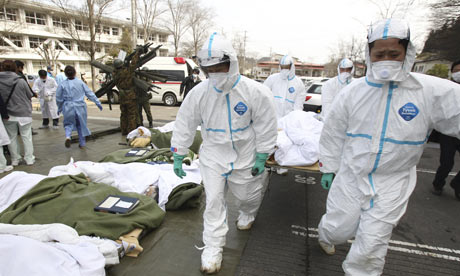




















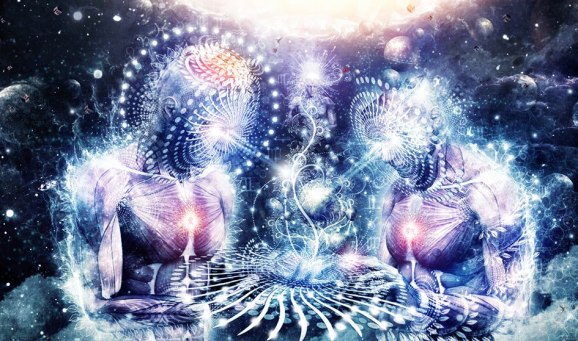








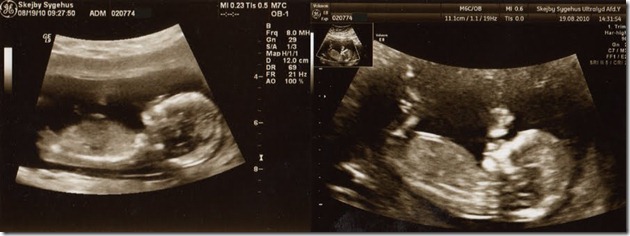


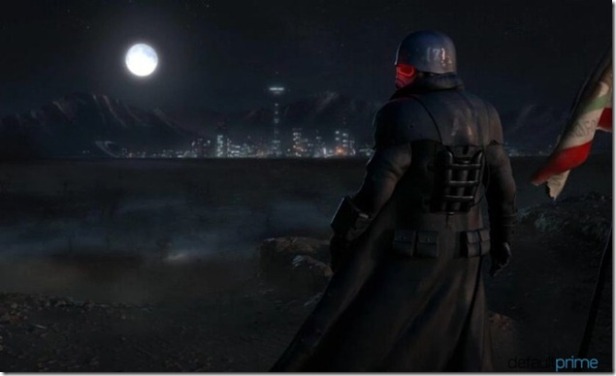



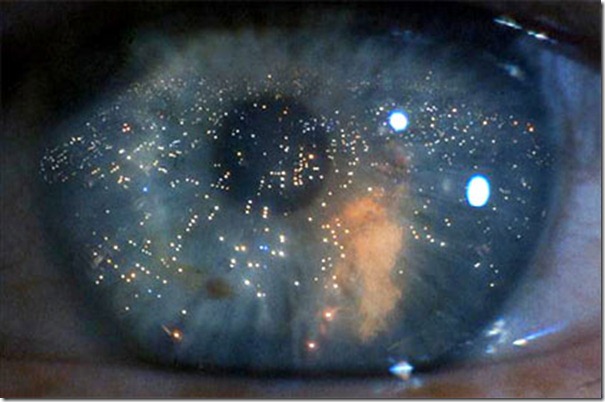













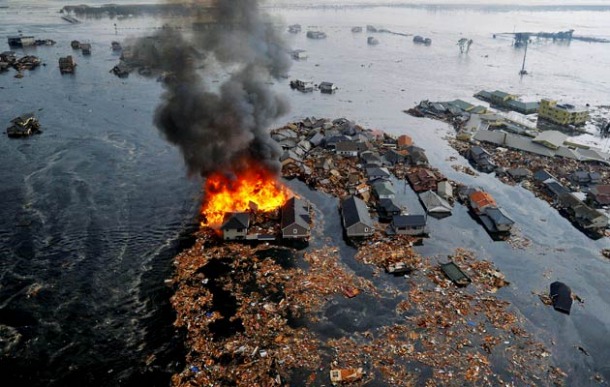



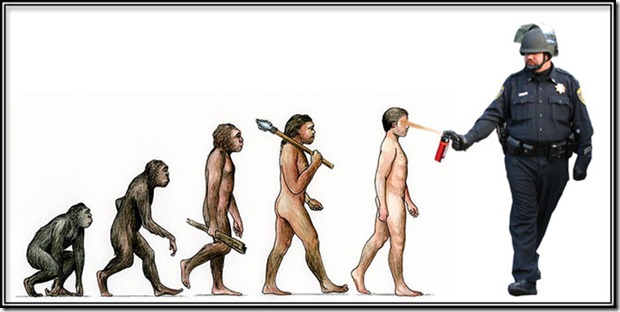
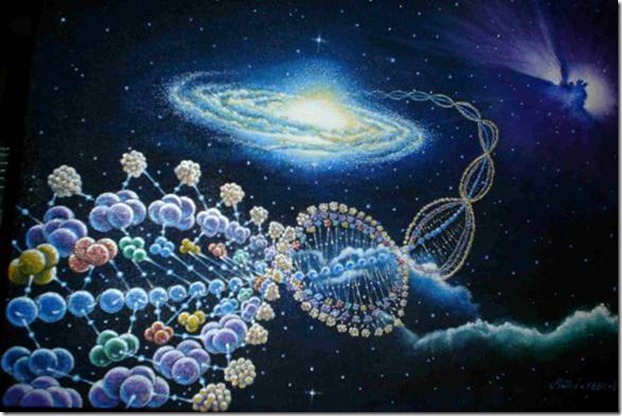


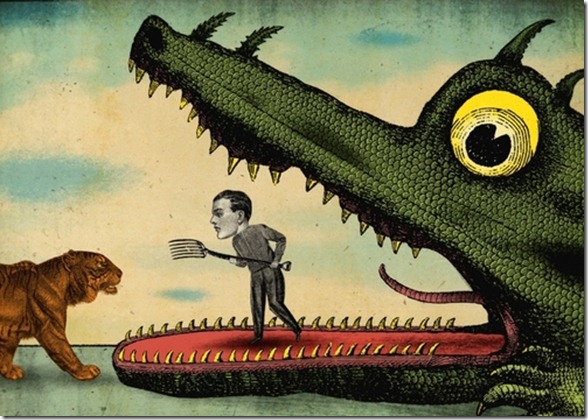

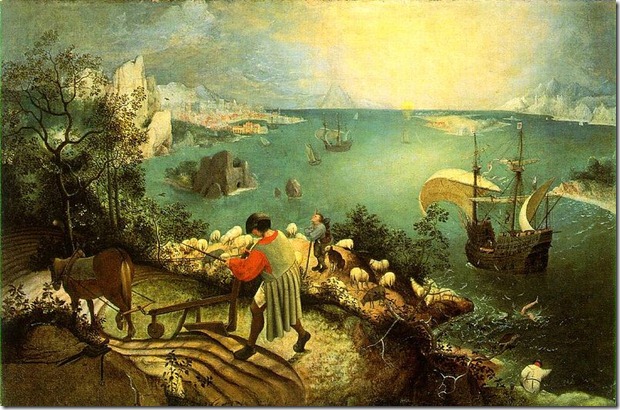




































 All this being said, now, perhaps for you the
All this being said, now, perhaps for you the 
 Another advantage of having the time capsule is what we can learn about such warnings. Will the media tell you of impending doom, so that we might avert it?
Another advantage of having the time capsule is what we can learn about such warnings. Will the media tell you of impending doom, so that we might avert it? 












 know who are absolutely convinced there is no saving us now and that it is naïve to expect anything but doom.
know who are absolutely convinced there is no saving us now and that it is naïve to expect anything but doom. 











Wonderful Can Happen: With Dumbness at the Top and Media as the New Opiate of the Masses, Still, “Yes, We Can” Proved We Could.
Posted by sillymickel in activism, allegory, authenticity, being yourself, Class, Culture, economics, Generations, globalrevolution, History, individualism, nonconform, occupywallstreet, philosophy, Politics, psychology, spirituality, US on November 6, 2012
To Our Amazement, Charlie Brown Connected, Lucy Apologized, a Man Who Said “Yes We Can,” Would: Anything Is Possible … Means Everything Is Possible
Culture War, Class War, Chapter 23: Something Wonderful Can Happen
There Are Good Reasons Why Our Financial and Environmental Fortunes Careen Wildly About: Dumbness Rises to the Top
Blinded by Their Greed, They Overlook the Obvious: Why Our National Misfortunes Are Greeted with Such Surprise by Authorities and Pundits
Voices Never Heard
What I’ve been trying to say here is, there are perspectives that are relevant and are never heard. And I’m talking about perspectives that are right outside the doors of power ready to talk and be heard; often having been perspectives that had been embraced not long ago, but suddenly, not having any credibility at all…so that our democracy of many voices—now with the filthy rich and their Republican lackeys and their paid-for media in collusion to mine only one avenue of discourse—begins to echo the Soviet Union of old with its one voice, Pravda.
Horrors Far Worse
Back in 2000, I also had written,
I believe our friend speaks eloquently about some of those far greater horrors, and indicates they are there right now on our doorstep. We had a surplus and a will to tackle them a decade ago. Sadly we have wasted the last ten years reversing those environmental policies whose intent it was to help. And we have reversed our financial situation, which could have helped. In addition, we have reversed the restrictions on corporations and other policies that would have helped and at least slowed down this ominous impending doom.
So we are a decade further along in environmental collapse, and it is has increased its acceleration toward us. Meanwhile we have slashed away at our financial and other resources for dealing with it and chopped back the time in which to work. The way I phrased it a decade ago.
Dumbness Rises to the Top
As for Wall Street and the economy, let’s take another look at how the media has dealt with other perspectives to flesh out my claims above of these perspectives not being far off.
On CNBC, a couple of years before the economic downturn, they used to have as a commentator, Robert Reich, who was President Clinton’s Secretary of the Treasury and the mastermind of the great economic turnaround of the Nineties.
Clinton’s Secretary of the Treasury and the mastermind of the great economic turnaround of the Nineties.
But he was talked over, laughed at, and was routinely talked to as if he was a child or suffered sadly from some kind of bleeding heart brain cloud. Well, as his words began to be the ones that should have been listened to, he was no longer to be seen on CNBC. And then afterward we have such a comment like, “Well, nobody could have seen it coming.”
Well how could they, if they were no longer put on the show?
So, blinded by their greed, they missed what the people I knew were all seeing—danger ahead, and the unsustainability of a rally that had risen on so much manipulation, misinformation, and constant drum blows of obviously wrong economic talking points hammered over and over across our airwaves and drowning out every sound of warning or opposition, so that surprise
and constant drum blows of obviously wrong economic talking points hammered over and over across our airwaves and drowning out every sound of warning or opposition, so that surprise and misinformation informed the trading decisions of the great bull traders.
and misinformation informed the trading decisions of the great bull traders.
So many people were hurt by this partisan power play. But that was the way of just about everything during those 8 years of, as one recent writer dubbed it, dictatorship.
Media Feel-Good Talk Does Not Equal Reality … and Why We’re Helpless to Prevent the Future Fukushimas and Killer Hurricanes.
Media Is the New “Opiate of the Masses,” with Pundits a New Priestly Caste Between Modern Pharoahs and the New Enslaved.
Media Mollifies Masses
Media Feel-Good Talk Does Not Equal Reality
No, they will, for the sake of ratings (profits), be a “feel good” media. They will spin out “comfort truth” — junk food for the mind — insubstantial and inconsequential and hardly soul-satisfying. But it will soothe the stresses brought to listeners through their otherwise participation in the capitalist matrix. As empty of truth as junk food is empty of nutrition it will act as medicine for the troubles of the postmodern soul—enslaved and unfree—but unaware even of that…and unable to even know that. So this media will serve the functions that religion once did for the elite, becoming another opiate of the masses. And the pundits will play the role of the priestly intermediaries between our modern pharoahs—the banksters and the filthy rich—and the masses upon which they feed.
will act as medicine for the troubles of the postmodern soul—enslaved and unfree—but unaware even of that…and unable to even know that. So this media will serve the functions that religion once did for the elite, becoming another opiate of the masses. And the pundits will play the role of the priestly intermediaries between our modern pharoahs—the banksters and the filthy rich—and the masses upon which they feed.
So no, it is not the media’s role to warn us of disaster. Hardly. Indeed, when that disaster is one of the many forthcoming from the actions of those elite they serve, it will be the media’s job to set up the screens of smoke and trivia to distract and entertain away from real concerns. Then they will, as we’ve seen, report afterward on it and bring out the “No one could have foreseen this happening.” Well that is a self-serving lie. I hope that is gleaned from all this if nothing else.
I’ve been detailing on the media complicity, indeed, facility in the Great Recession caused by the tax cutting policies of George W Bush. But since then we have seen Fukushima, the BP oil spill, and Sandy. Could Fukushima have been prevented? Yes. For I can personally tell you, as an anti-nuke activist in the Eighties, how we were warning back then of the immense dangers of nuclear power plants and especially those on earthquake fault lines. Has the media advanced that story line? You know the answer to that.
Feel good media? I think so! At odds with reality? You tell me.
In the Past It Has Had Horrific Consequences.
Feel-good talk does not equal reality. If it did there would not have been the Nazis, the Holocaust, a Stalin—five million dead; a Cambodia—millions dead; a Rwanda—dead dead dead; or an AIDS epidemic—uncountable dead and growing.
Yet what I wrote over a decade ago, at the time if it had been shared in any place of power, would no doubt have been challenged by this word: “Paranoid.” This is the common way the public uses denial to avoid harsh realities. Blame the messengers, the dangers go away. I’m sure my planetmate friend’s piece earlier has already been labeled that way: “Paranoid.” “It’s all paranoia on the part of some crazies” is the common attitude.
Blame the messengers, the dangers go away. I’m sure my planetmate friend’s piece earlier has already been labeled that way: “Paranoid.” “It’s all paranoia on the part of some crazies” is the common attitude.
That is the way we keep out the truth. It is like using a drug to ease the pain of your cancer, but it doesn’t do anything to keep you from dying.
Indeed, the planetmates’ lament, though it be labeled paranoid, is based on the findings of the best scientific minds of our times about the environmental collapses—the outright ecocide that is upon us from so many causes and in ways that are now uncountable in number. Their message is so much more important in that we will likely reach the point of no return long before the masses of humanity are severely suffering from the continued environmental assault.
Their message is so much more important in that we will likely reach the point of no return long before the masses of humanity are severely suffering from the continued environmental assault.  I don’t like to say it, but it needs to be said that some are convinced that it is already too late, that we had a window of opportunity and blew it. I know of groups in the
I don’t like to say it, but it needs to be said that some are convinced that it is already too late, that we had a window of opportunity and blew it. I know of groups in the  know who are absolutely convinced there is no saving us now and that it is naïve to expect anything but doom.
know who are absolutely convinced there is no saving us now and that it is naïve to expect anything but doom.
Troubling it is that, on top all that’s been said about this message and what it has told us about what we lost and how far we are now from where we need to go, not to mention knowing we were betrayed by our government obviously, we now realize without a doubt our media too helped when they could have stopped it all.
Wonderful Can Happen, Part Three — Amazingly, Charlie Brown Connects: Remember … “Yes, We Can” Proved We Could
Shaken Out of Our Mental Maze, We Would Be A-Mazed: Lucy Apologizes, Sisyphus Rests, A Man Who Said “Yes We Can,” Would
Why Know This? Amazingly, Charlie Brown Connects
So, these things we know. They are sobering rationalizations and ones we should not run from.
But then also they become the movie and are interwoven into the times themselves.
 And their words, with this time capsule before me, are sounding childish, repetitive, forgetful, amnesiacal. Especially this is true as many of the ones speaking now are remembered as being the exact persons commenting then. And their words, little changed, bespeak a zen-like ability to be newly alarmed, being reborn in every minute, but yet totally unchanged and untaught by all the years of witnessing and commentary. So they also have forgotten the way they once saw the world and their life … just as I once did.
And their words, with this time capsule before me, are sounding childish, repetitive, forgetful, amnesiacal. Especially this is true as many of the ones speaking now are remembered as being the exact persons commenting then. And their words, little changed, bespeak a zen-like ability to be newly alarmed, being reborn in every minute, but yet totally unchanged and untaught by all the years of witnessing and commentary. So they also have forgotten the way they once saw the world and their life … just as I once did.
If We Knew, Would We Act?
It seems a defense mechanism to forget that we saw all this coming. For to know that is to despair in realizing the impotence, even, of awareness. Who wants to realize that in these matters even a knowledge of the story line, as if having seen the movie once before, is totally useless? Who wants to think that there is a helplessness in affecting the events of our lives and times, that there is a total futility in changing or steering away or around even the tragedies clearly seen beforehand?
For knowing this we feel as detached as actual cinema-goers from the unfolding of the plotline. We feel ourselves to be not actors and hardly even the scriptwriters of our lives, instead merely the witnesses of intensely shocking and stunning events, which we actually expected but hoped we would be wrong about. So wouldn’t we want to block out that awareness of the futility of our actions? Wouldn’t we have to in order to have the heart to keep going at it? To get up and keep trying every day?
Sisyphus Remembering, Would He Continue Pushing?
But There’s More To It
Lucy Apologizes, Sisyphus Rests.
To the astonishment, truly, of an entire world, Charlie Brown connected with the football, Lucy apologized for her past actions, and one heavy boulder remained steady on the top of a hill and gave a man a much needed rest from his endless labors.
For one incredible and glorious time, the movie we’d seen had a different ending—amazing enough in itself. But also the tragedy in the original did not occur. And as if God had for a time touched this planet, this Reality we call our World, our Life…as if God had just for one time touched, tipped, and turned our events, the awesomely unexpected happened.
A man so unbelievably naïve and unaware as to declare the “audacity of hope” and to call out and stir up the masses, deluding them as we’ve seen so many times before, that “yes, we can,” would.
Shaken Out of Our Mental Maze, We Would Be A-Mazed.
The Only Thing We Can Be Truly Sure Of … Is We Can Never Be Sure… Which Means That Anything Is Possible… Which Means That Everything Is Possible.
Our Inability to Know Is the Source of a Hope That IS Real: Wonderful Can Happen, Part Four: It’s Just as Likely the Miraculous Will Happen.
Just When We Thought We Knew…
Anything Is Possible… Which Means That Everything Is Possible
The most unchanging thing of life is not the things we see that never change. They are not the most unchanging thing of life. The most unchanging thing of life is something surrounding the absolute clarity we have about these things, these harsh realities even. When you’ve finally come to accept life, you’ve accepted these unpleasant things, these hard truths, and you think that for sure now you’ve got it, that it was all about learning to accept that…and thereby become the “adult,” the seasoned, assured cynic.
Accepting Life’s Pain. But Because We Are Imperfect…
What I’m saying is: Knowing that, we know that it is exactly the imperfection that is the most solid thing in life. You see? It’s not the things that they try to make solid. This is the thing that is solid, is gonna be there, always. Nobody has to try to make that happen, there’s always going to be an unknown.
Therefore, since there’s always going to be an unknown there’s always going to be human imperfection. For we may think we know everything, sometimes. But only a fool goes through life very long thinking that. And so, in knowing that, knowing that that’s the most unchanging thing of life, the thing you can really count on, that’s never going to go away…well, we know that it is exactly the imperfection, that lack that’s in a person, that evil, that unmoving wrongness of the world that we have tried so futilely to change, that being in us, is the source of the blessedness of life, which is the fact that our ultimate unknowingness is the only true source of a hope that IS real,
It’s Possible “Something Wonderful Is Going to Happen.”
It is only because we know that we cannot really know, for sure, that then we can know for sure that there’s always got to be hope because we could never know for sure that there wasn’t. So, what a blessing that is. That being wrong, being imperfect means something unbelievable when you think of it: Which is that against all odds, “something wonderful is going to happen.”
Ultimate unknowingness is the only true source of a hope that is real. And you say, how can you say that? You say, that’s not true. Then I ask you, are you perfect? You say, no. Then I say, the only true thing is that you’re not perfect, so that anything you are absolutely sure is wrong has a possibility of being right.
And Anything Is Possible … Means Everything Is Possible.
And all because the only thing that we can be truly sure of—even when we are finally convinced that we should not expect anything special—is that we can never be sure… which means that anything is possible… which means that everything is possible.
Continue with Culture War, Class War, Chapter Twenty-Four: Naked Republicans
Return to Culture War, Class War, Chapter 22: Horrors Worse Than That
Invite you to join me on Twitter:
http://twitter.com/sillymickel
friend me on Facebook: https://www.facebook.com/sillymickel
Share this:
1%, 2000, 2012, 60s, 70s, 99%, activism, AIDS, Alan Greenspan, America, american, anti nuke, apocalypse, apology, audacity, authenticity, authorities, awareness, Barack Obama, Bill Clinton, blessedness, blessing, BP oil spill, budget, bush, Cambodia, candidates, Cantor, capitalism, capsule, Carter, caste, change, charlie brown, Chernobyl, class, climate, climate change, climate denyers, CNBC, commentary, commentators, common sense, Consciousness, corporations, culture, cynicism, danger, darkness, death, debates, defense mechanism, democrat, democrats, denial, despair, dictatorship, die, disaster, doom, dreams, Dumbness, earthquake, ecocide, ecology, Economics, economy, Ed, election, elite, enslaved, Environment, environmental collapse, environmental policies, events, evil, Evolution, experts, extinction, filthy, filthy rich, football, foresight, forgiveness, fracking, freedom, fukushima, futility, generation, George W. Bush, global warming, God, goldilocks economy, Gore, government, great, Great Recession, greed, happen, happiness, health, helpless, helplessness, History, Holocaust, hope, horror, humanicide, humanity, humanticide, hurricane, Hurricane Sandy, idealism, ideals, ignorance, impending doom, imperfect, imperfection, individualism, intellectuals, JFK, Kennedy, knowledge, Kudlow, Larry Kudlow, lies, life, Lucy, magic, many voices, Martin Luther King, masses, matrix, McCain, media, message, mind, miracles, misfortune, misinformation, Mitt Romney, movie, Mr, National Debt, Nature, Nazis, Neumann, news, nonconform, nuclear power, Obama, obvious, occupy wall street, opiate of the masses, ows, pain, paranoia, partisan, peek-a-boo, perspectives, pharaohs, pharoahs, Philosophy, planet, Planetmate, Politics, poor, possible, power, Pravda, presidential election, priestly caste, profits, prophets, psychohistory, Psychology, pundits, puppet, rant, ratings, reagan, reality, Regan-Bush, regression, Reich, Religion, Republican, Republicans, reveal, rich, Robert Reich, Romney, Rush Limbaugh, Rwanda, Ryan, Sandy, science, seers, Seventies, sisyphus, sixties, society, something, soul, Soviet Union, spirituality, Stalin, stupidity, success, suffer, superstorm, surprise, tax cuts, Tea Party, The Audacity of Hope, time, time capsule, truth, truths, unknowingness, unknown, voices, Wall Street, war, warning, wealthy, White House, Wilber, wonderful, wonders, world, yes we can
Leave a comment